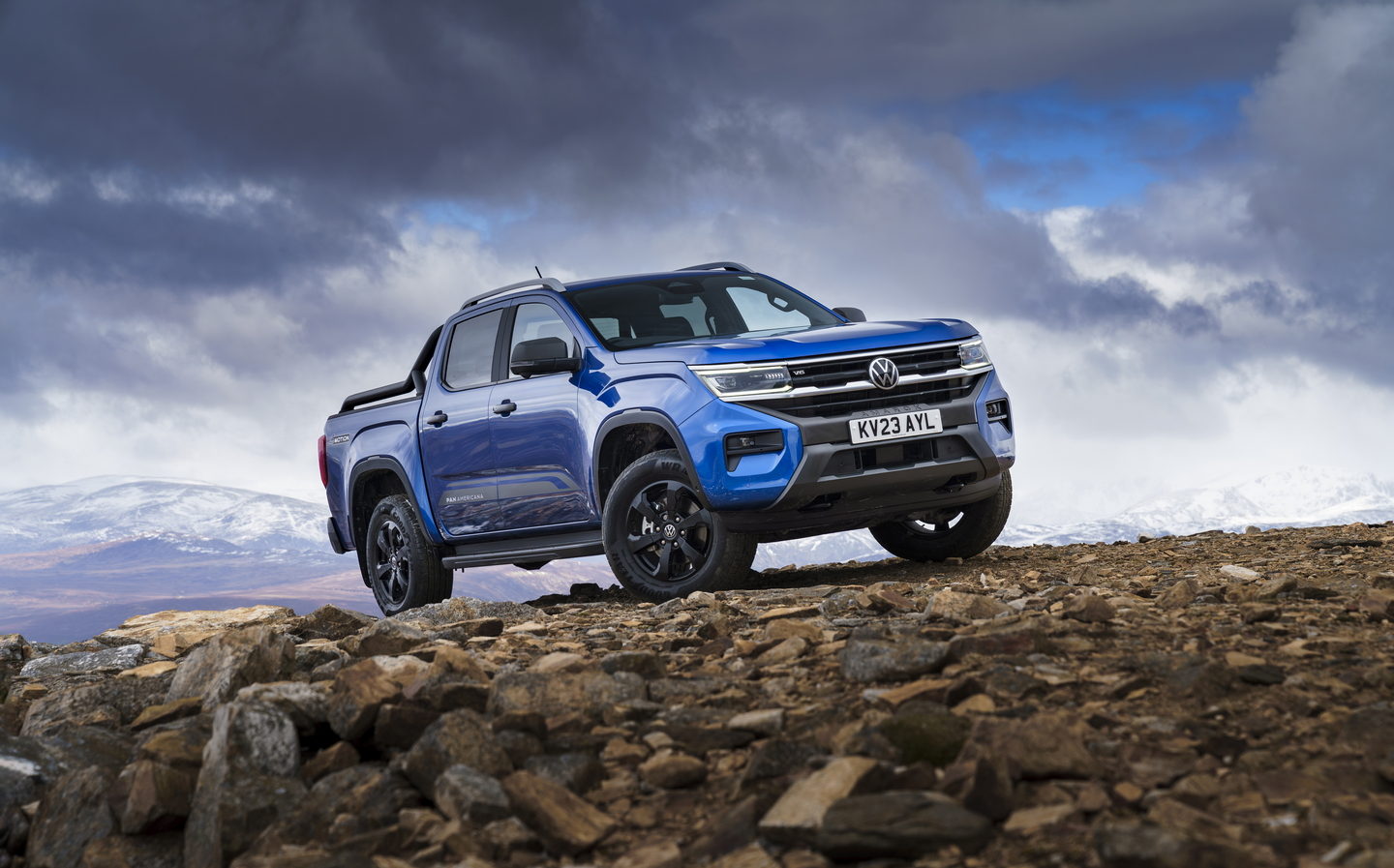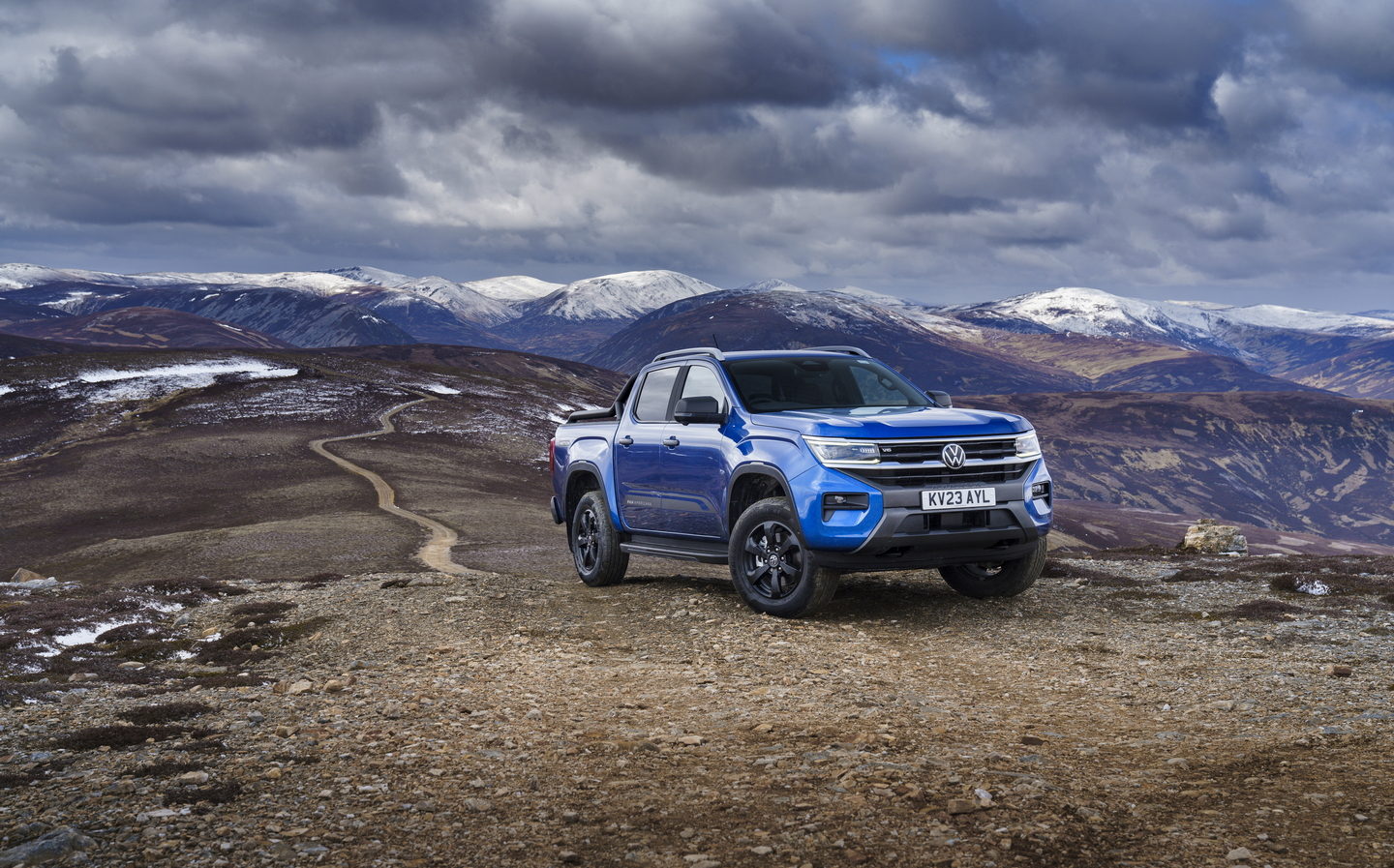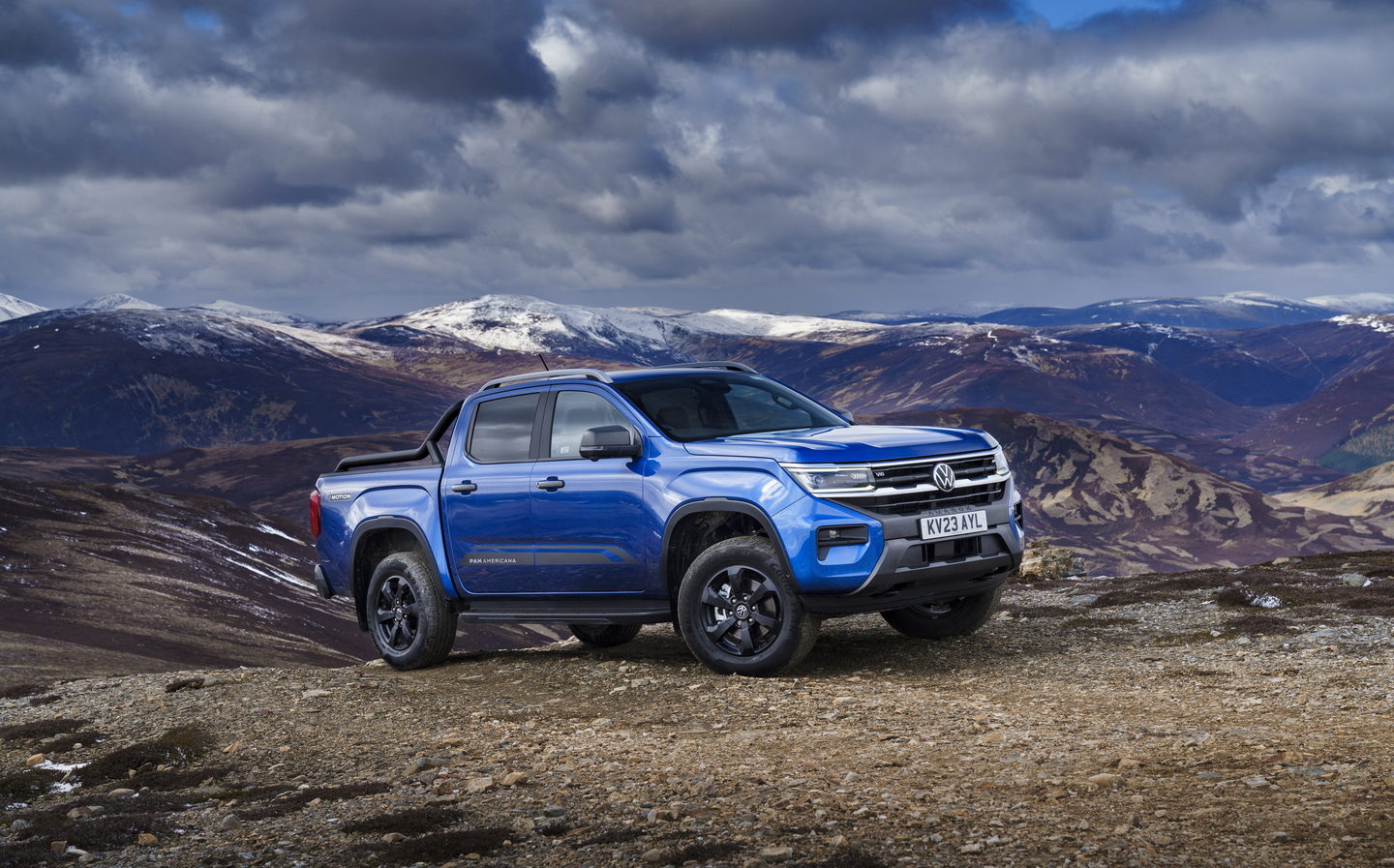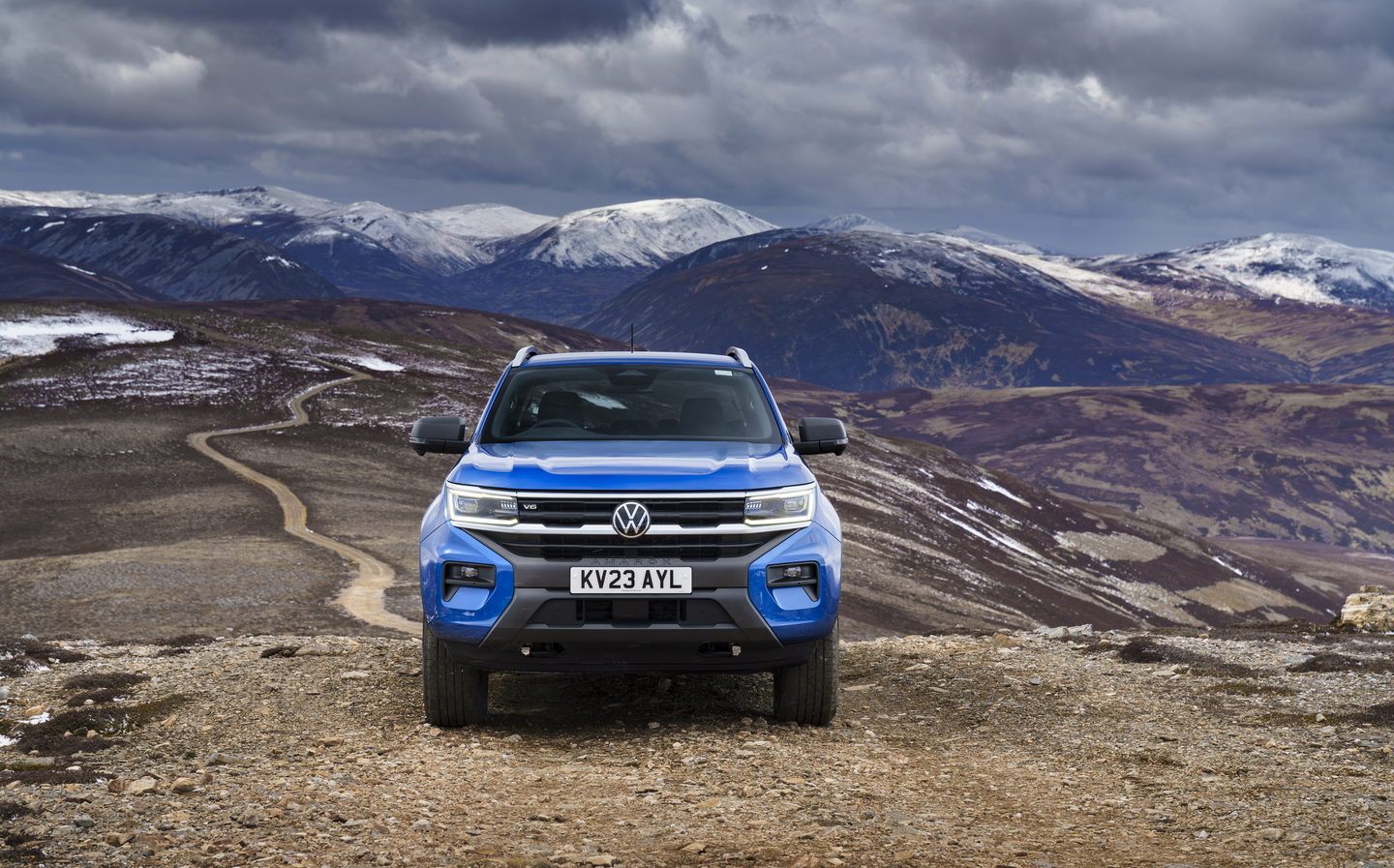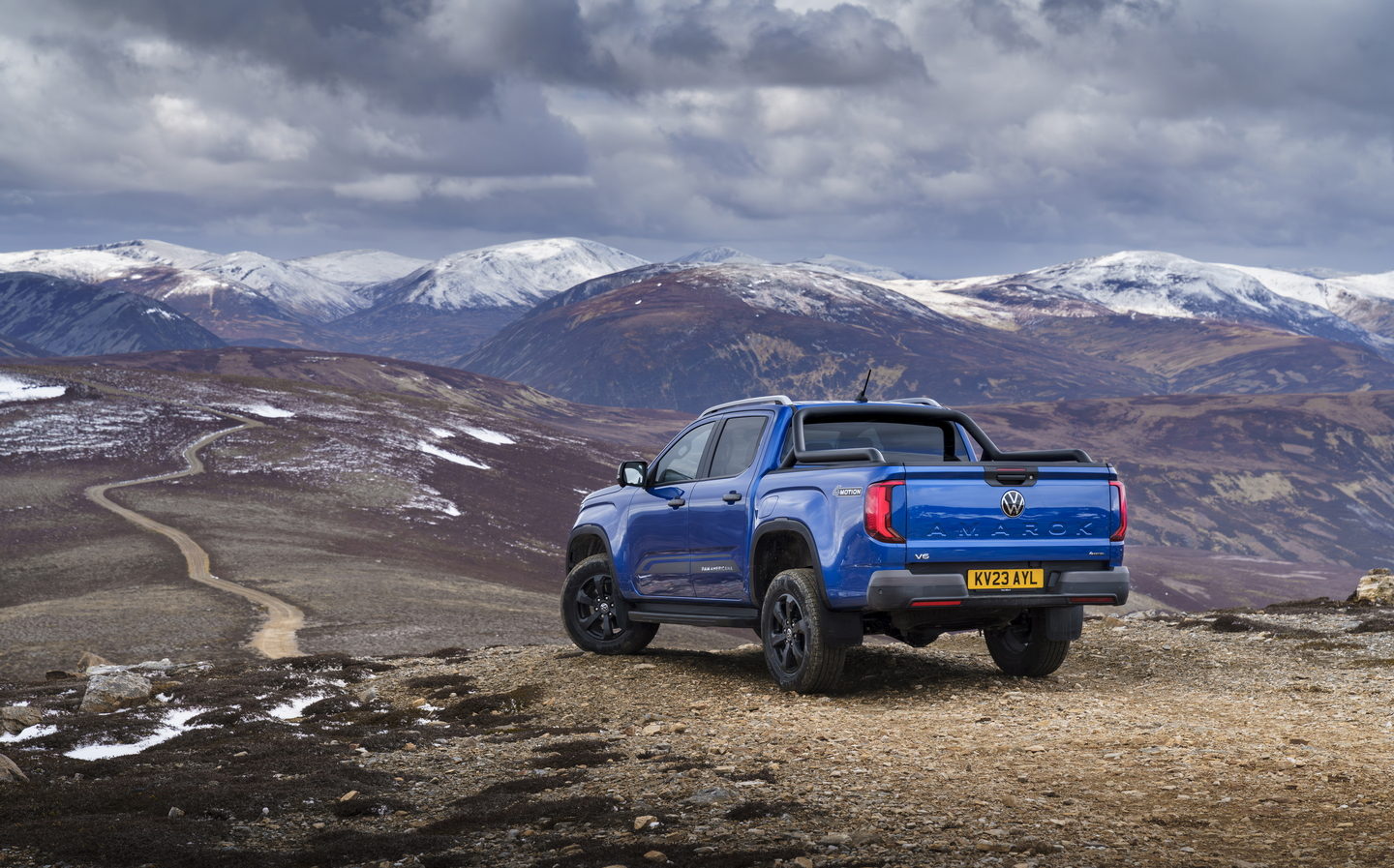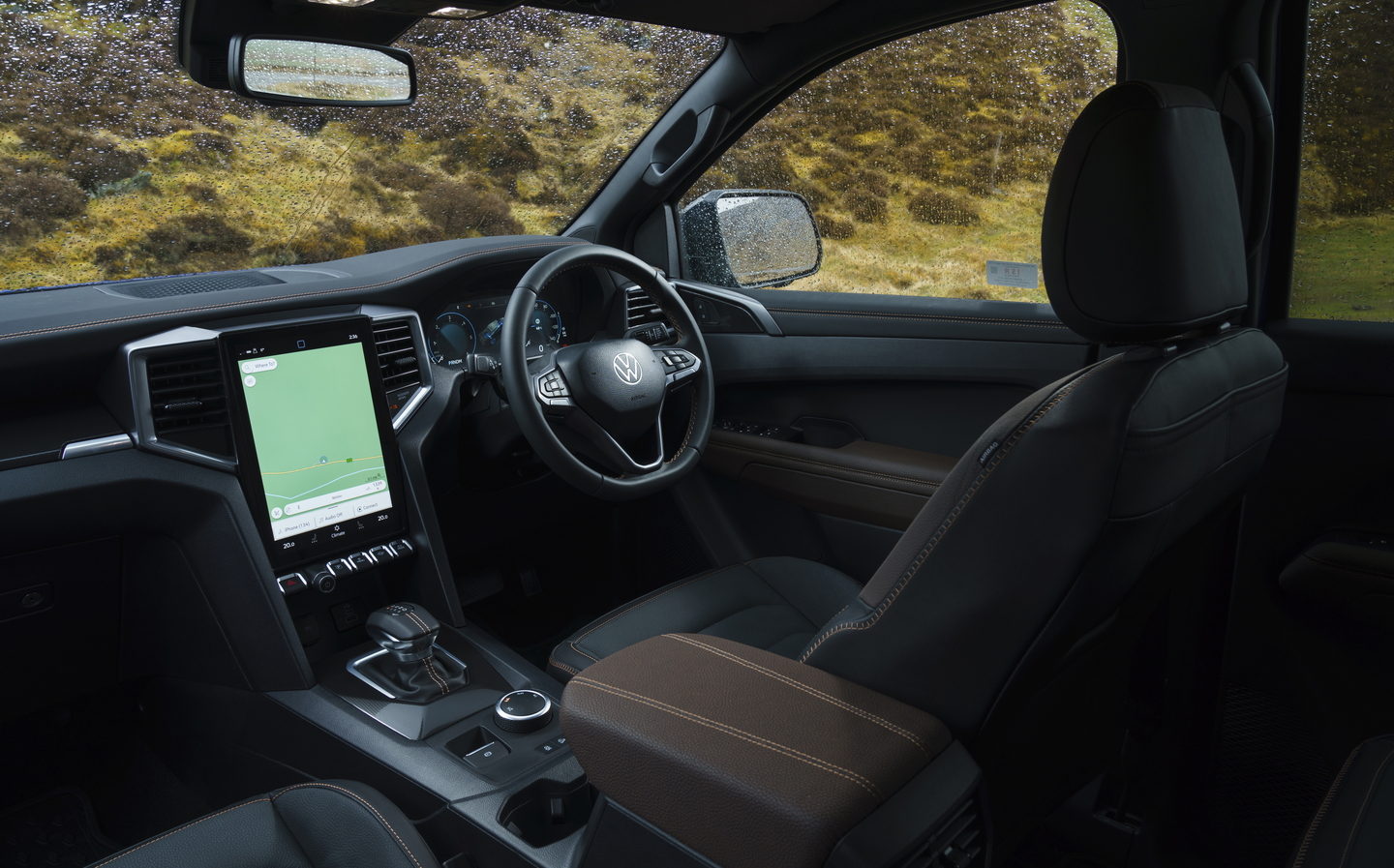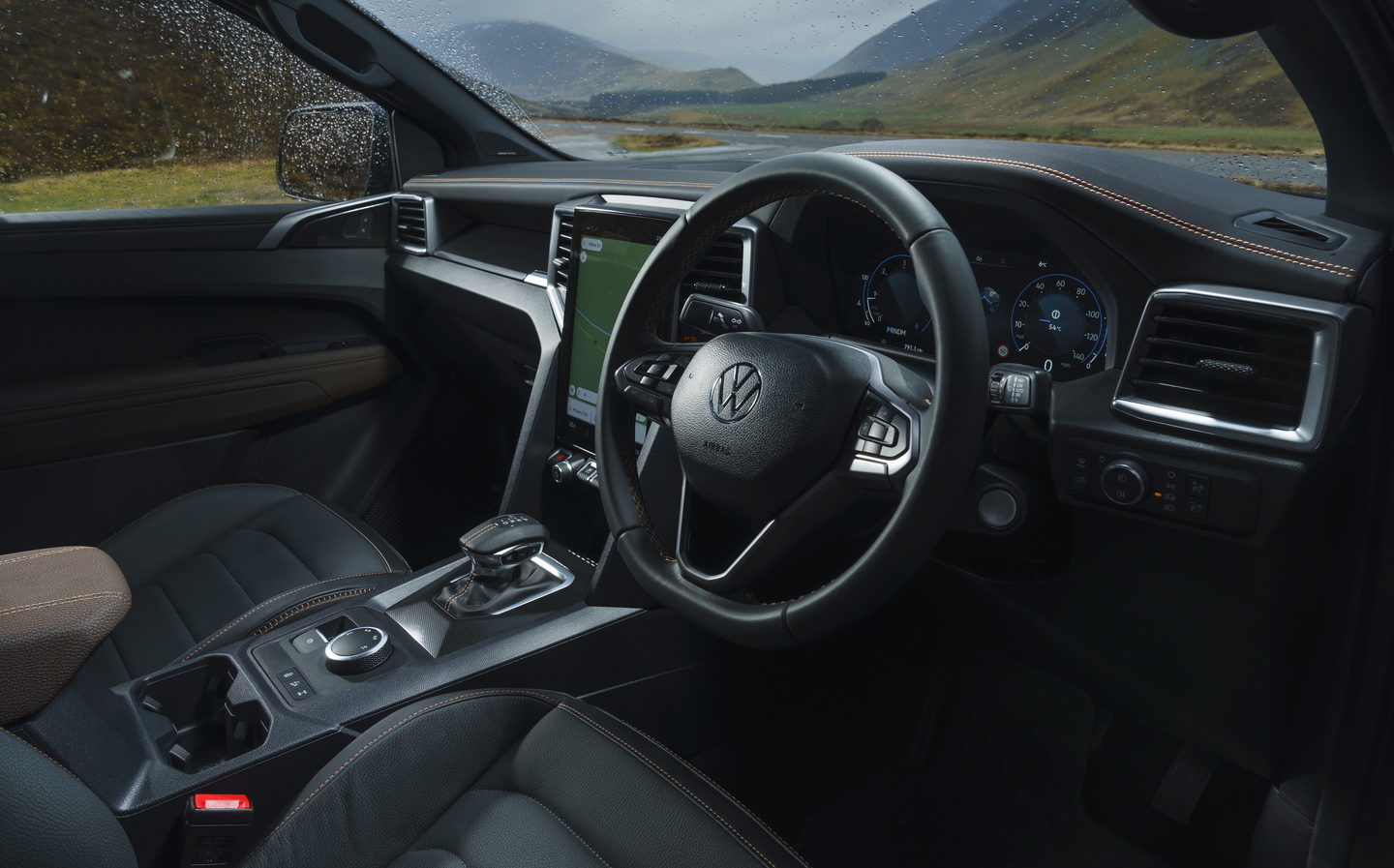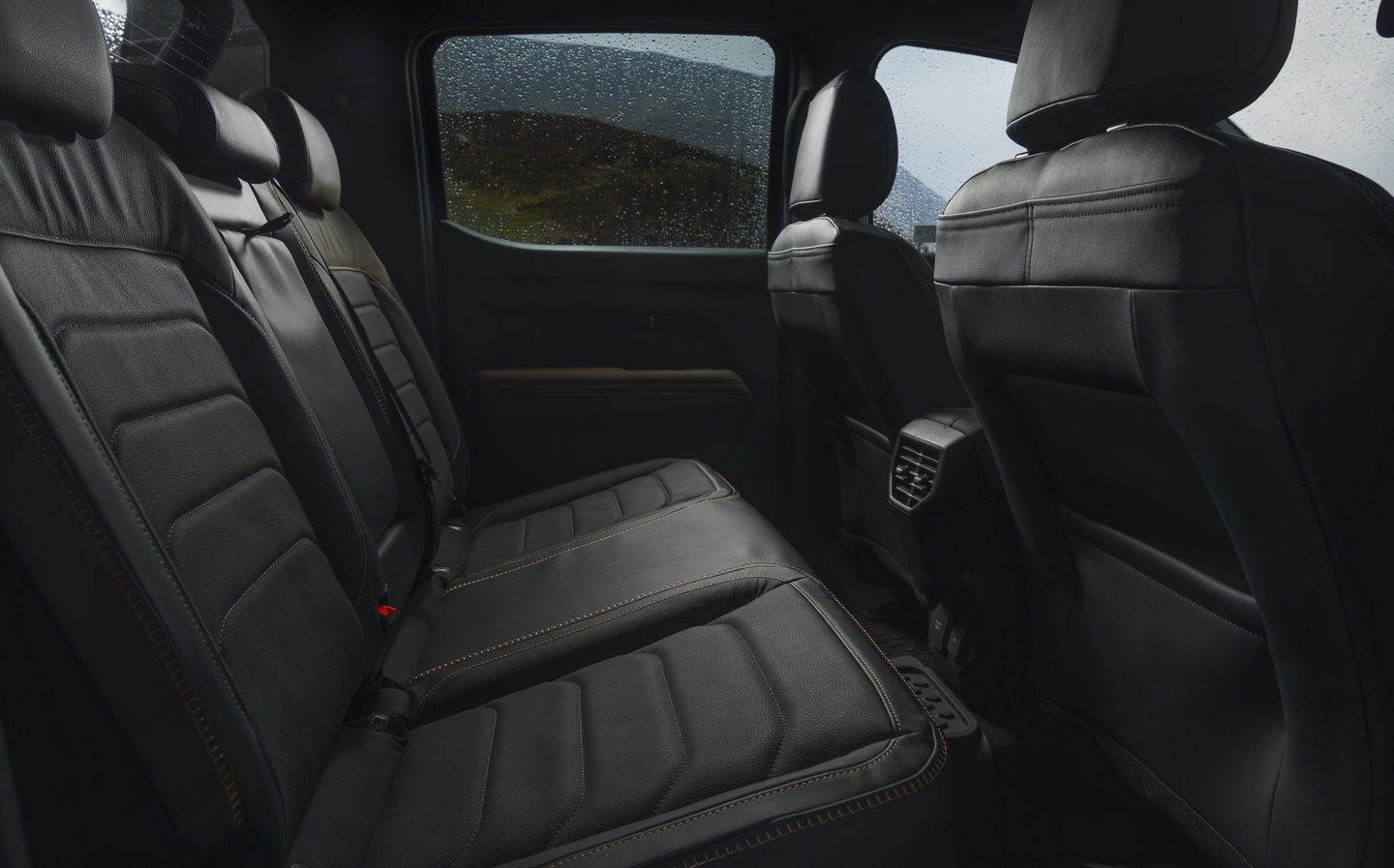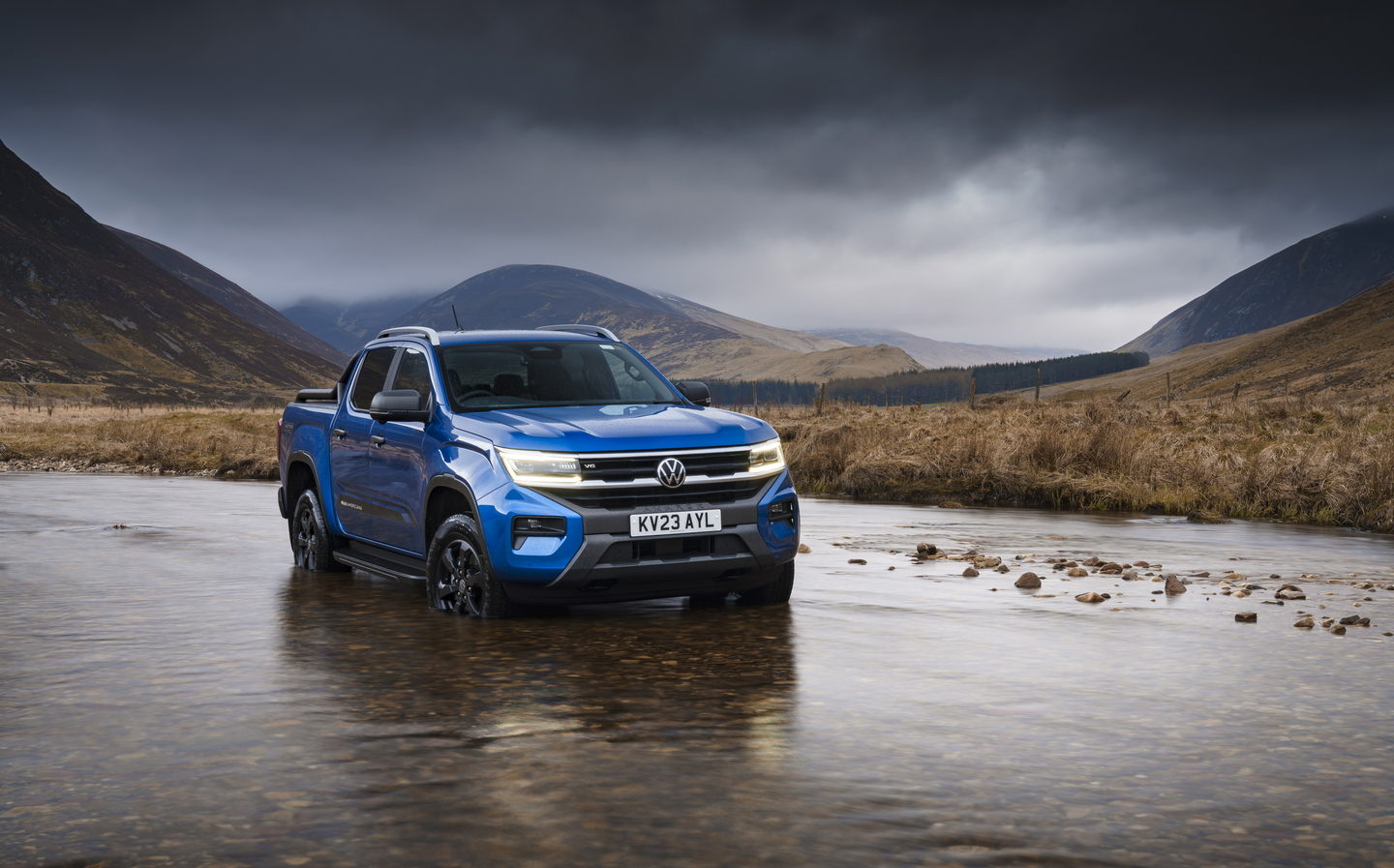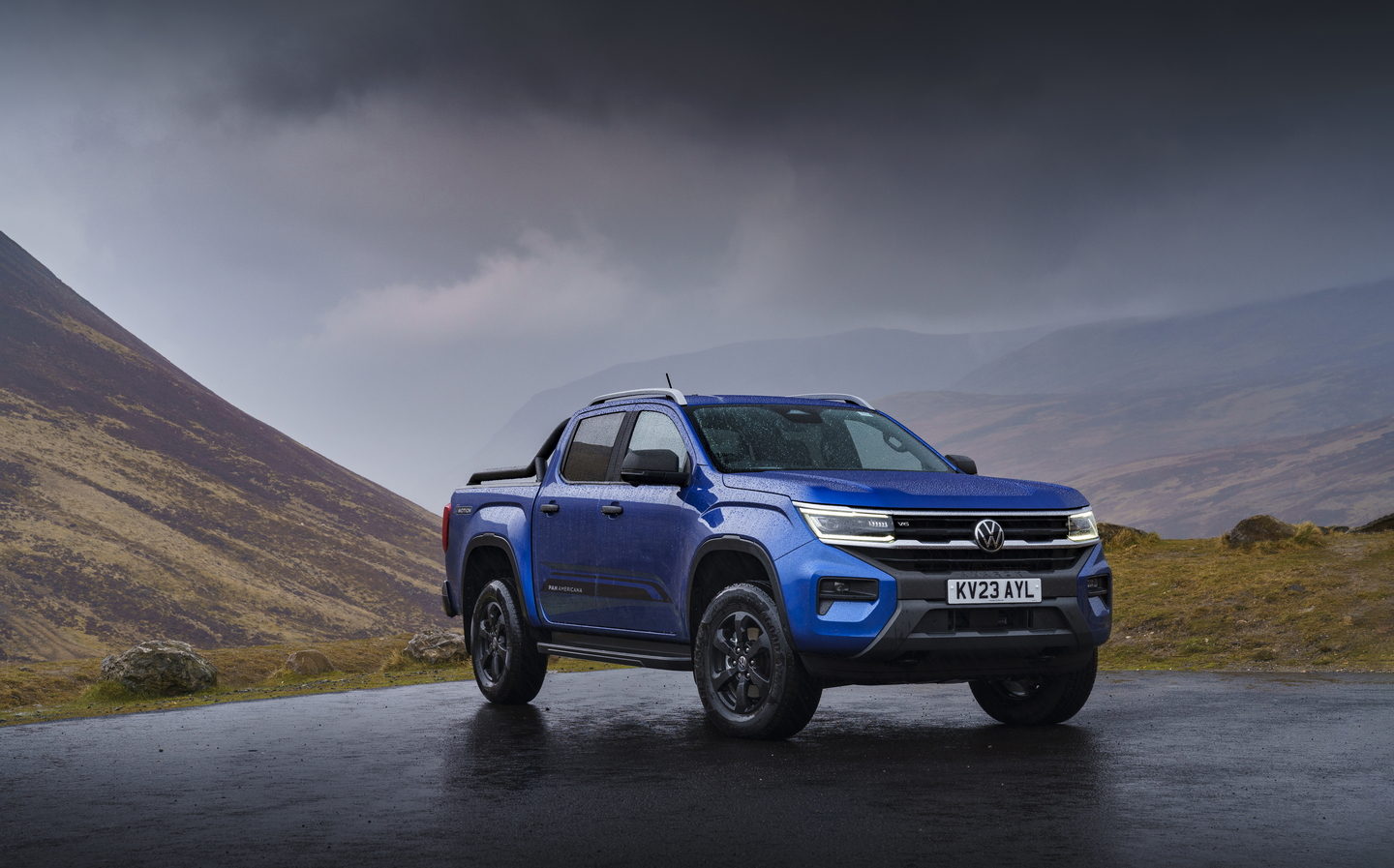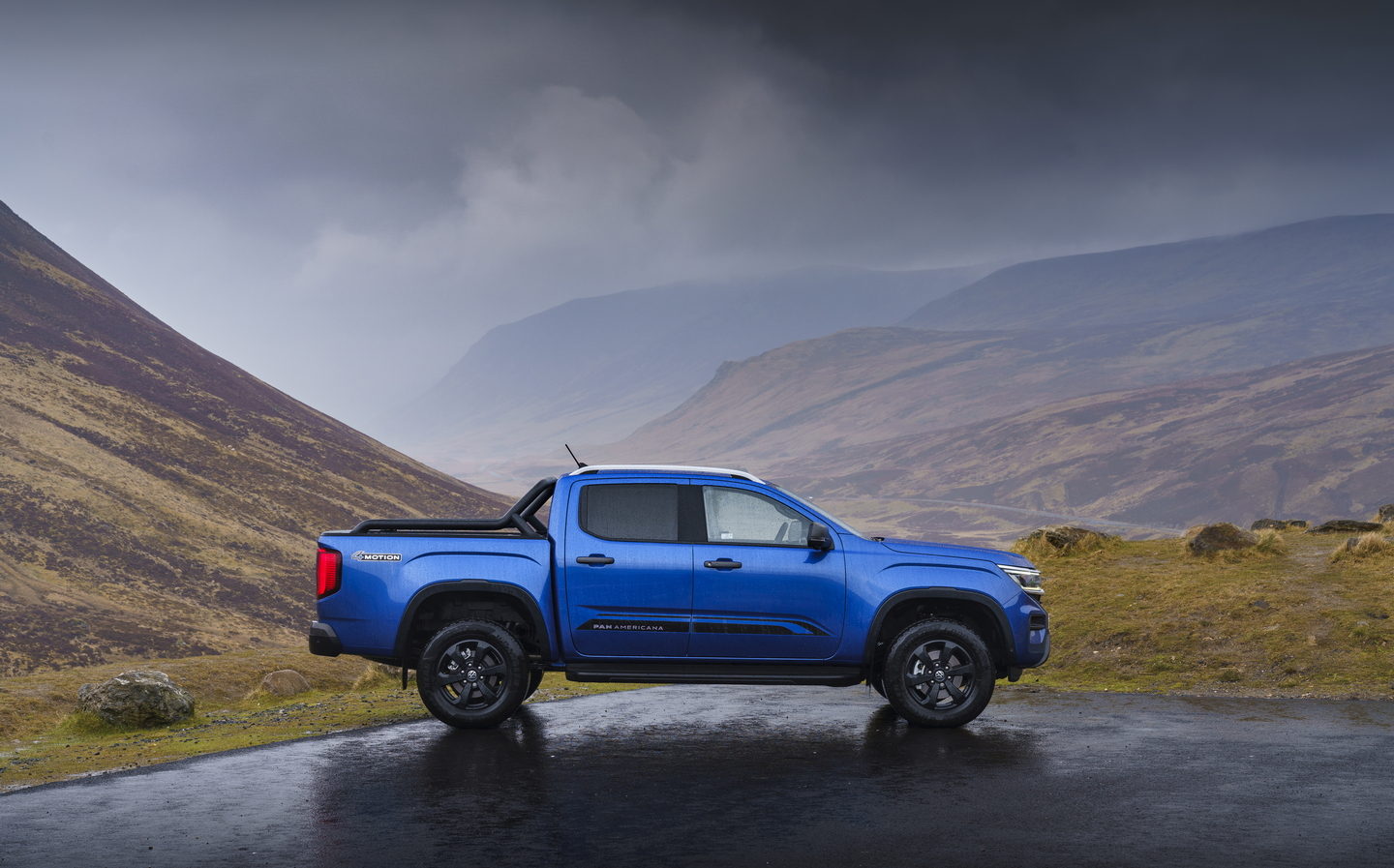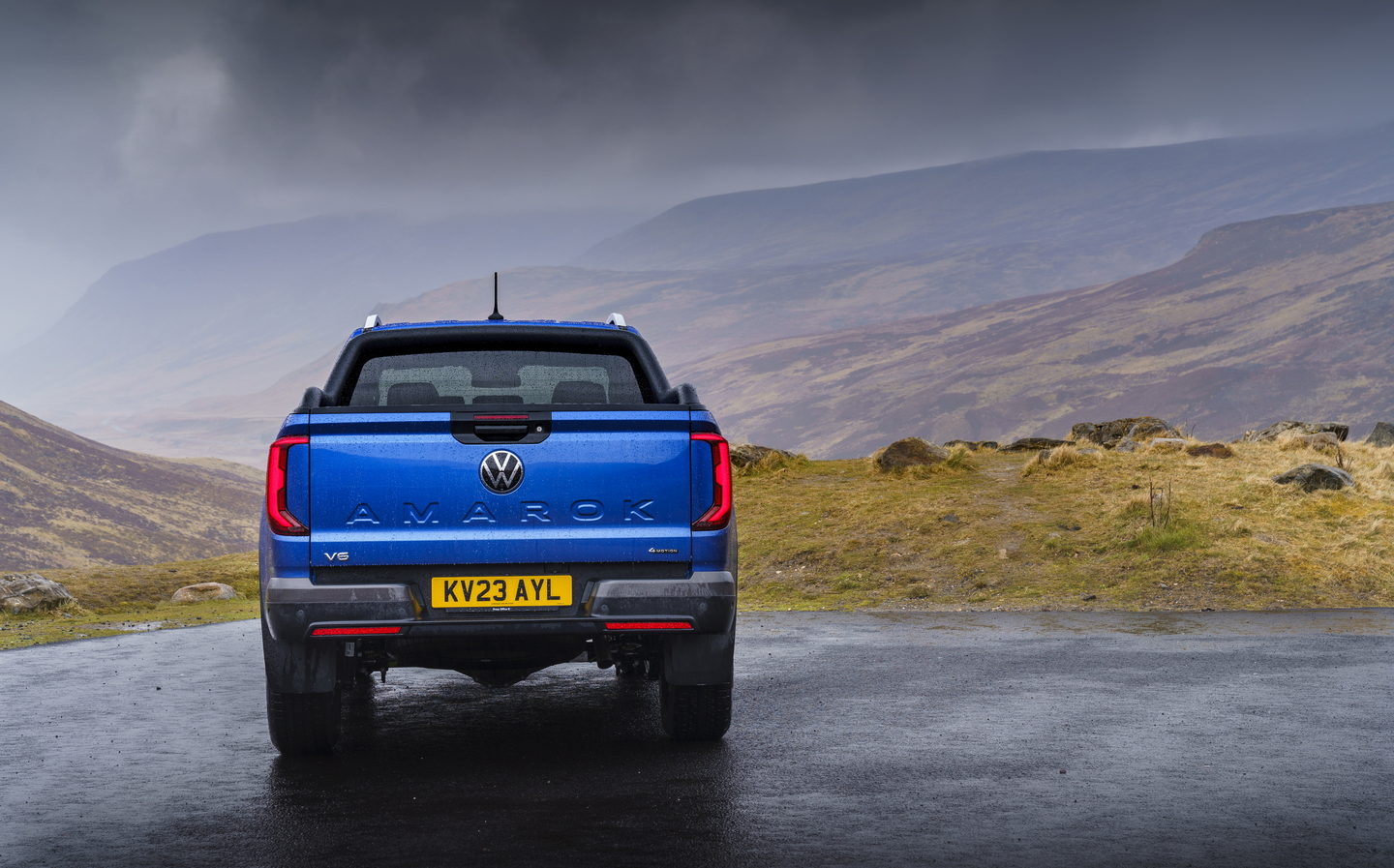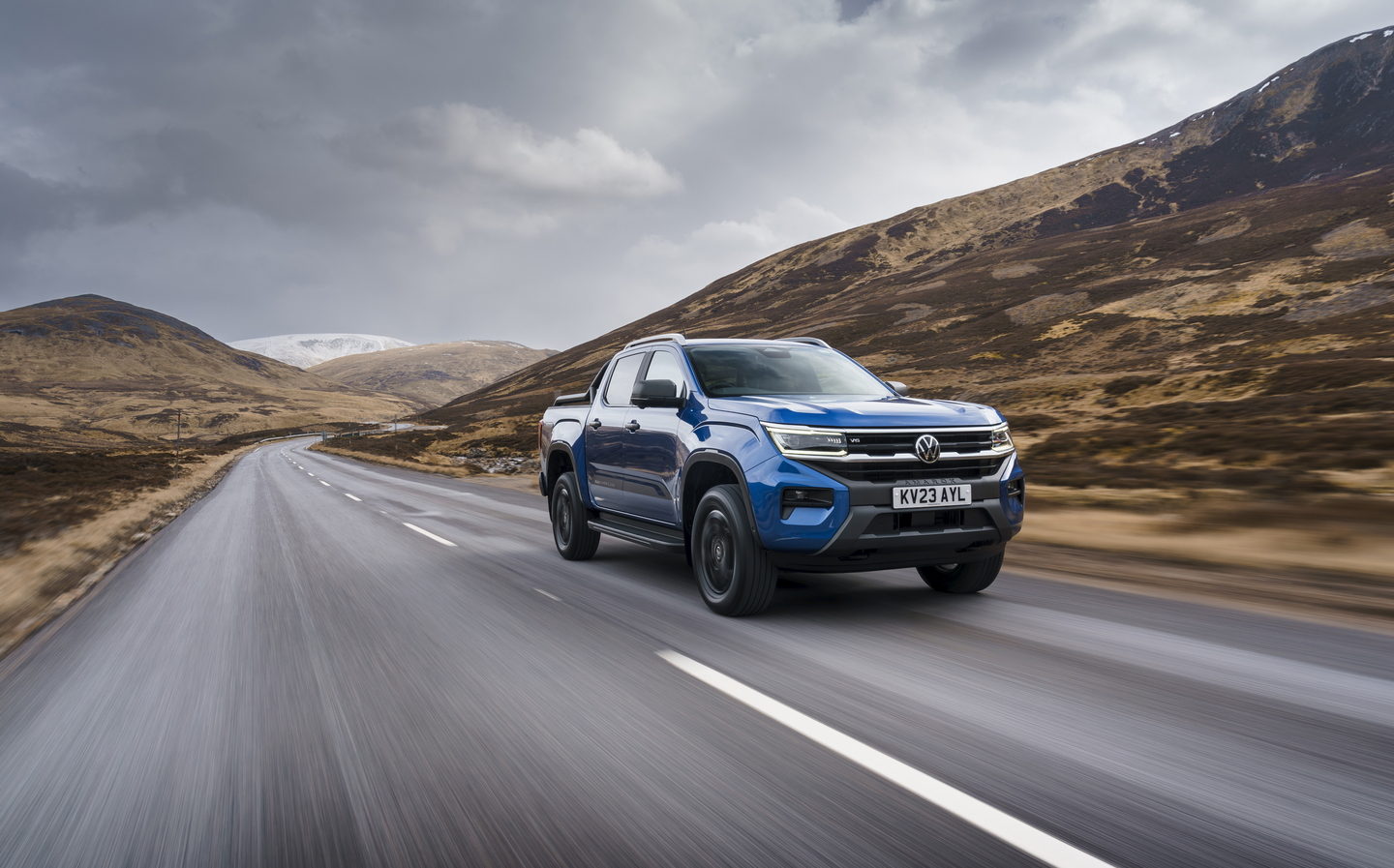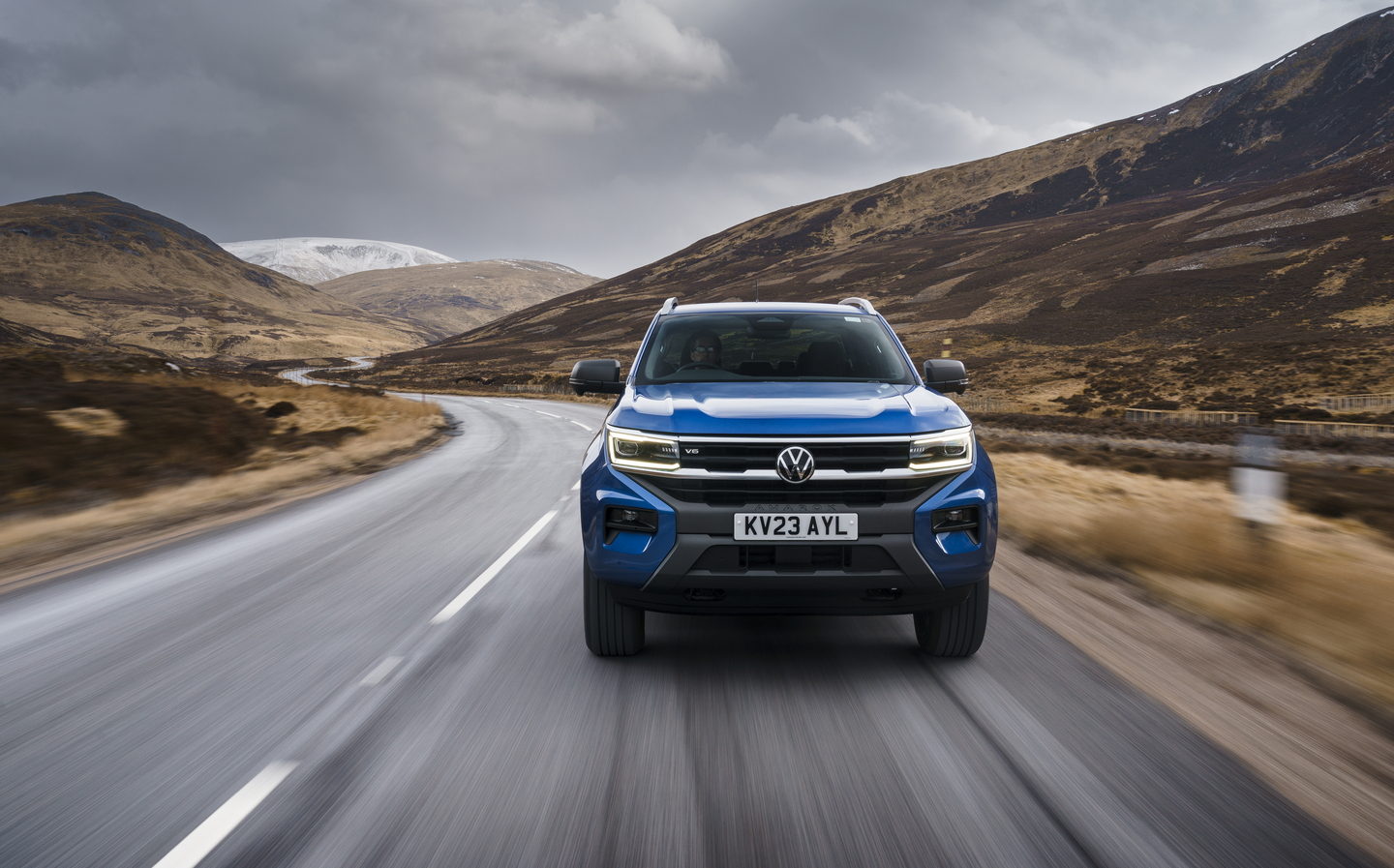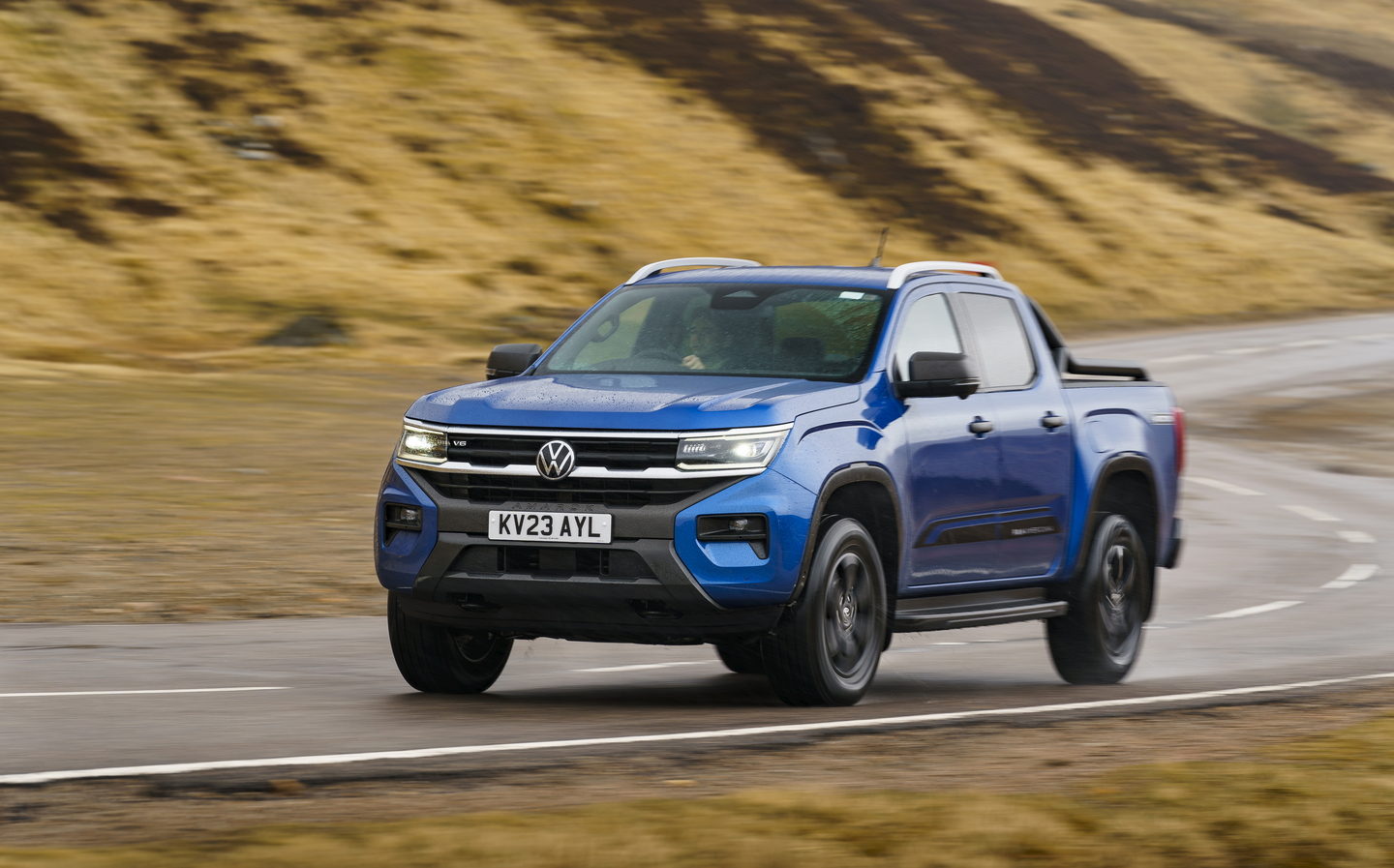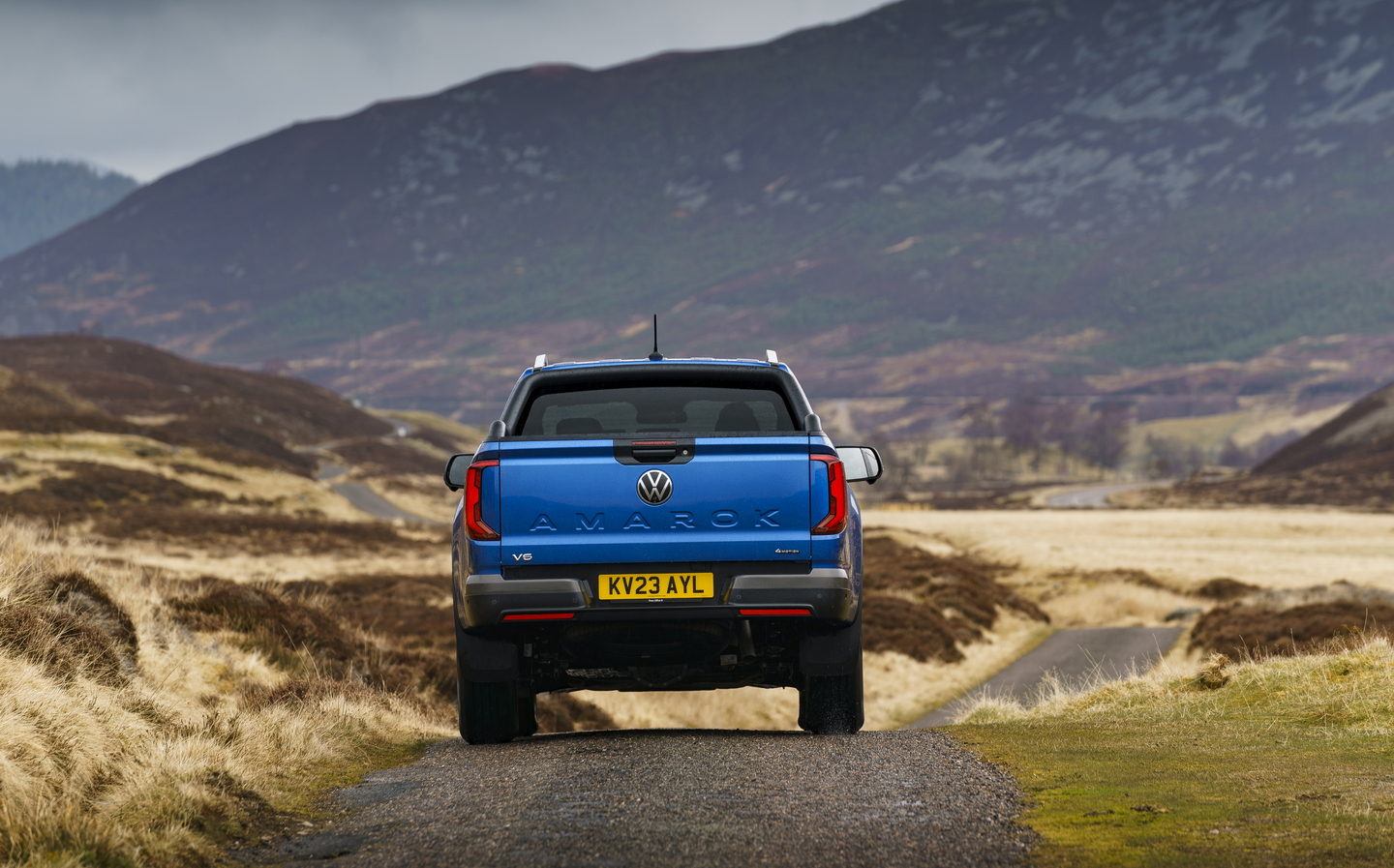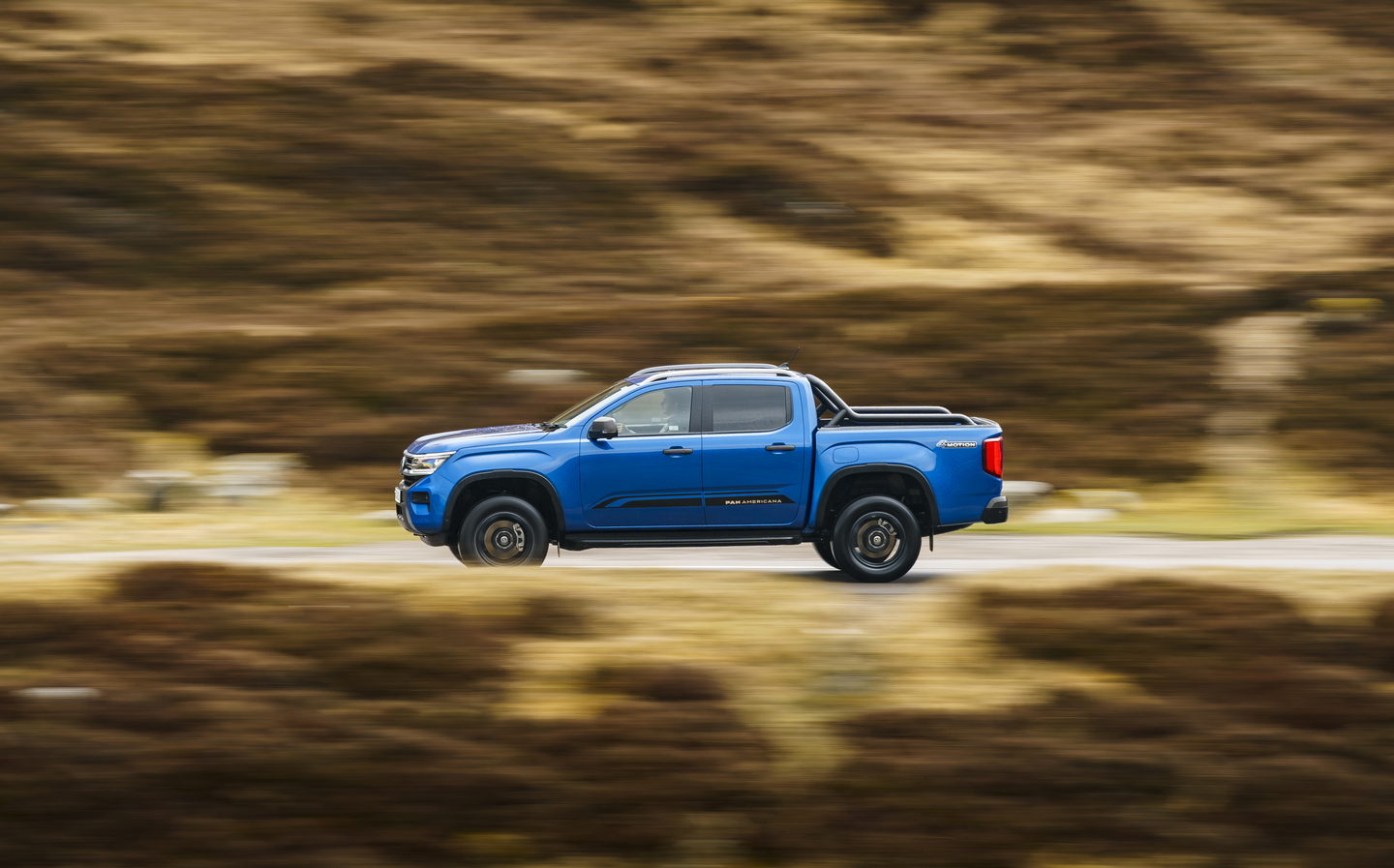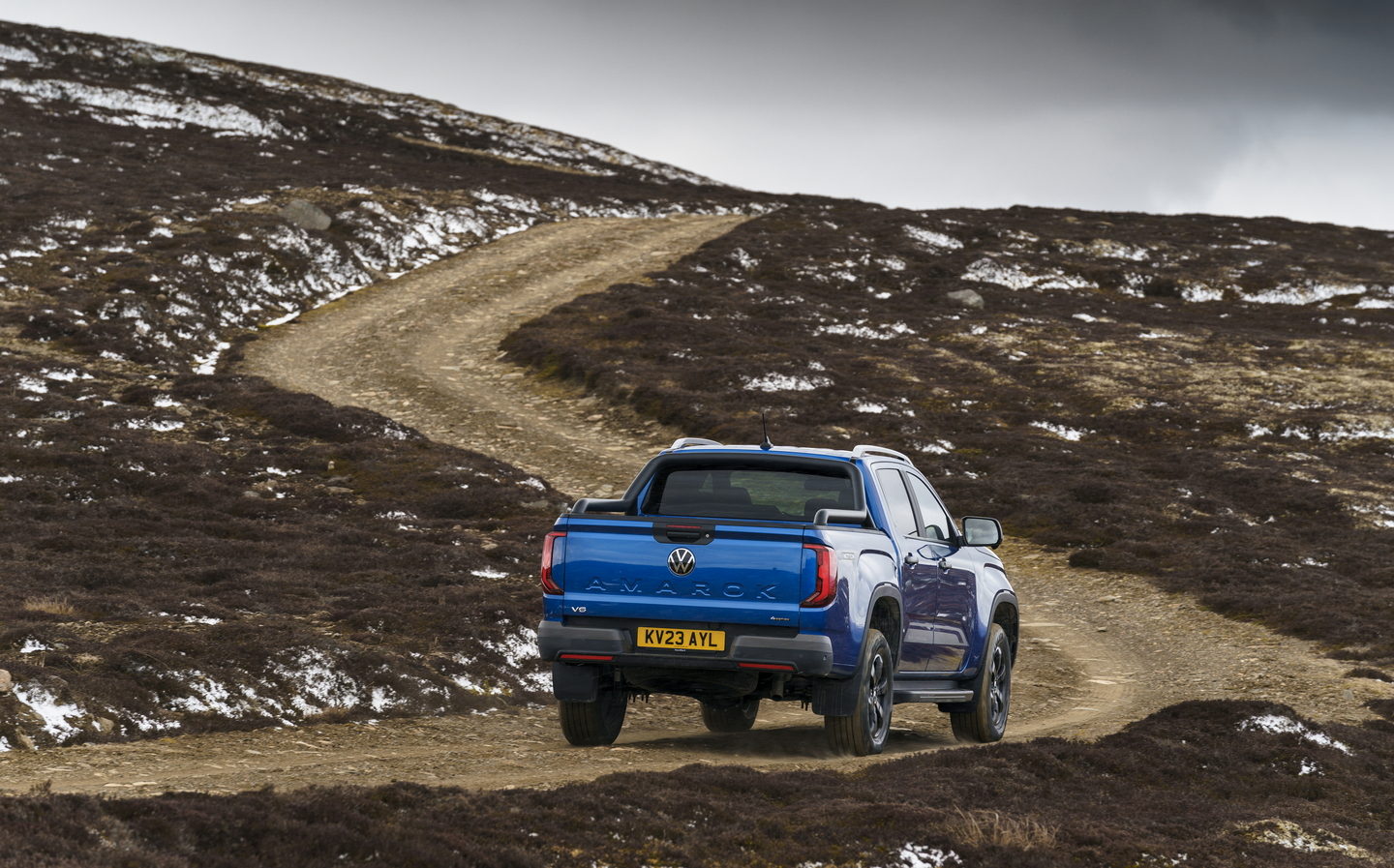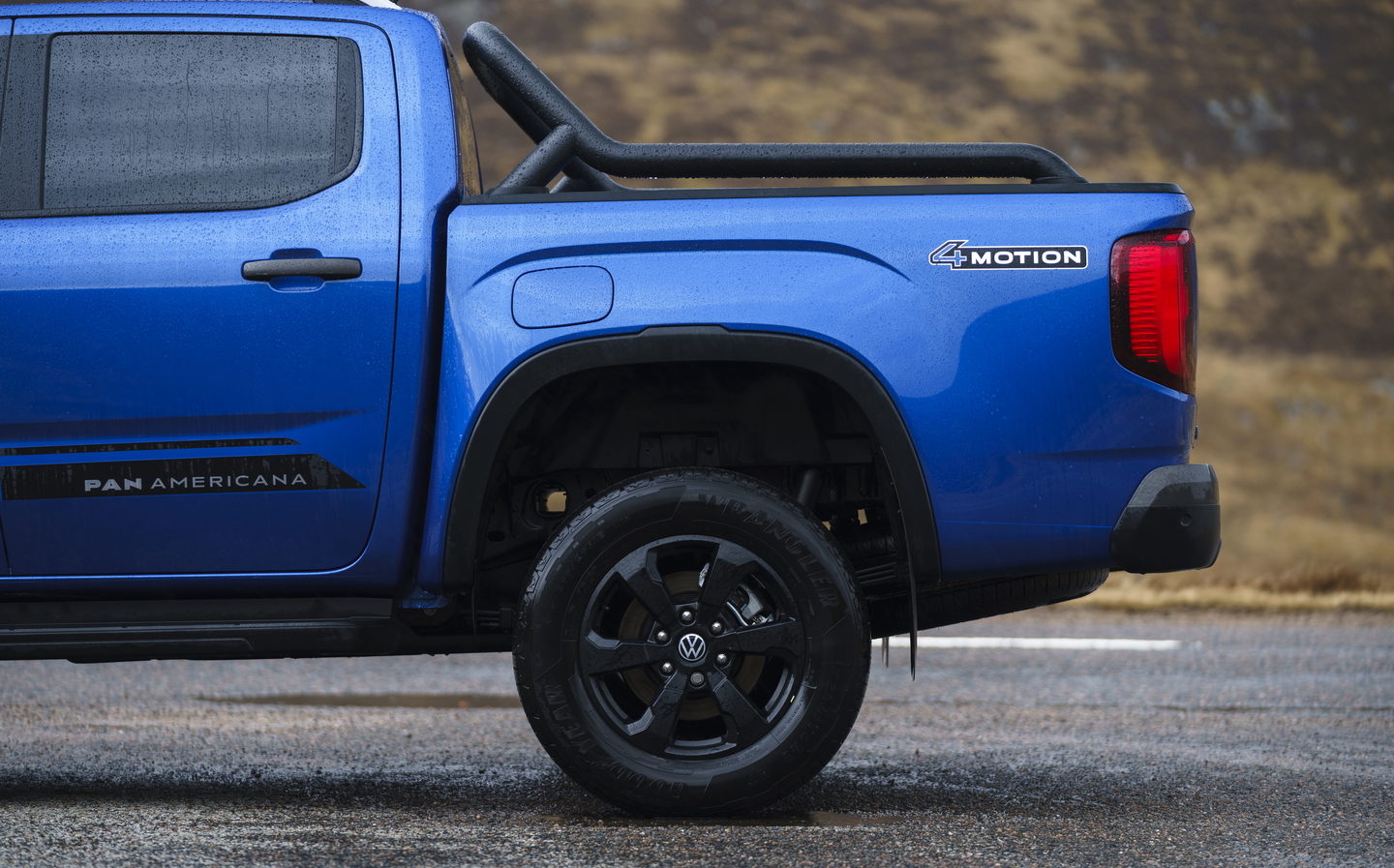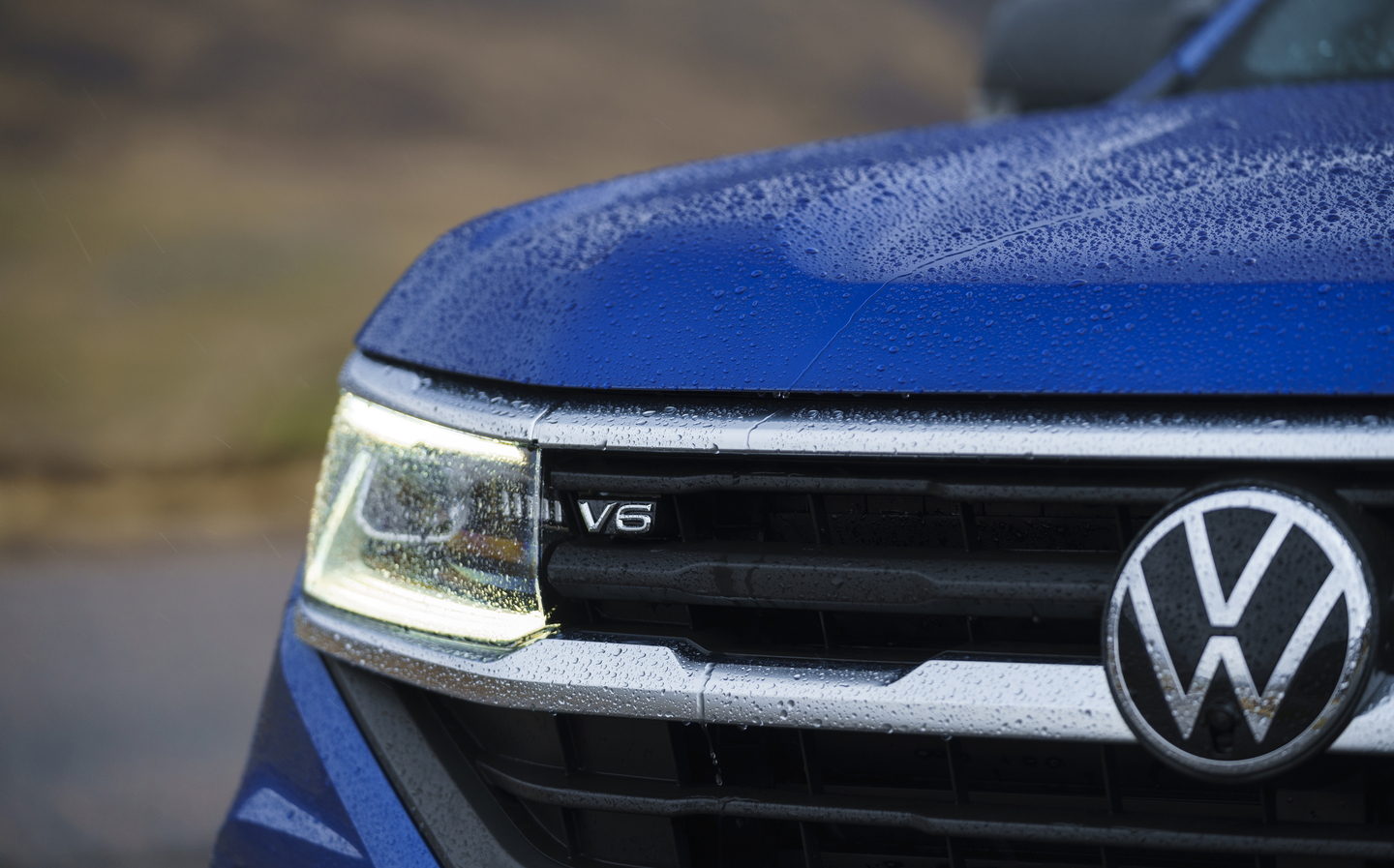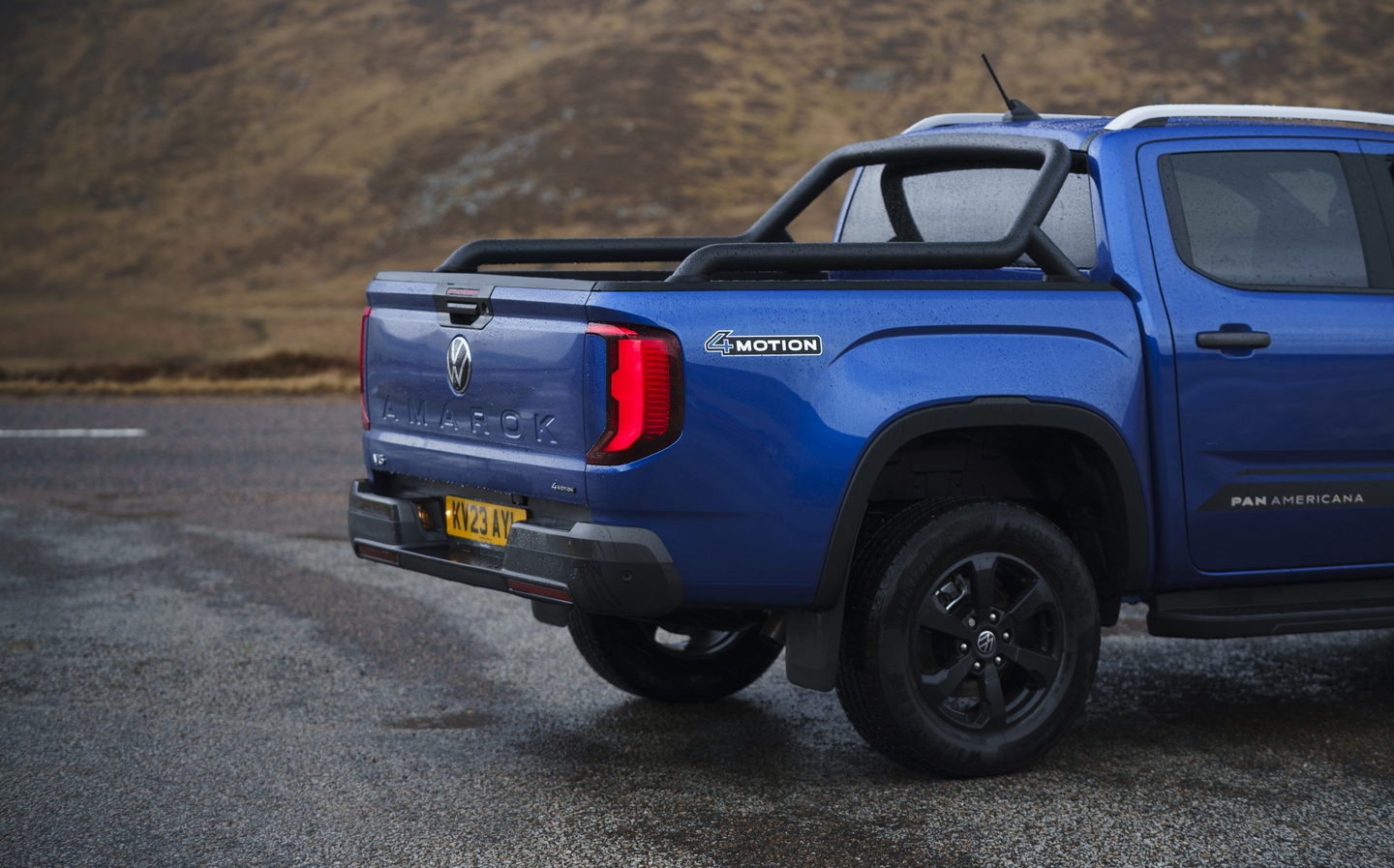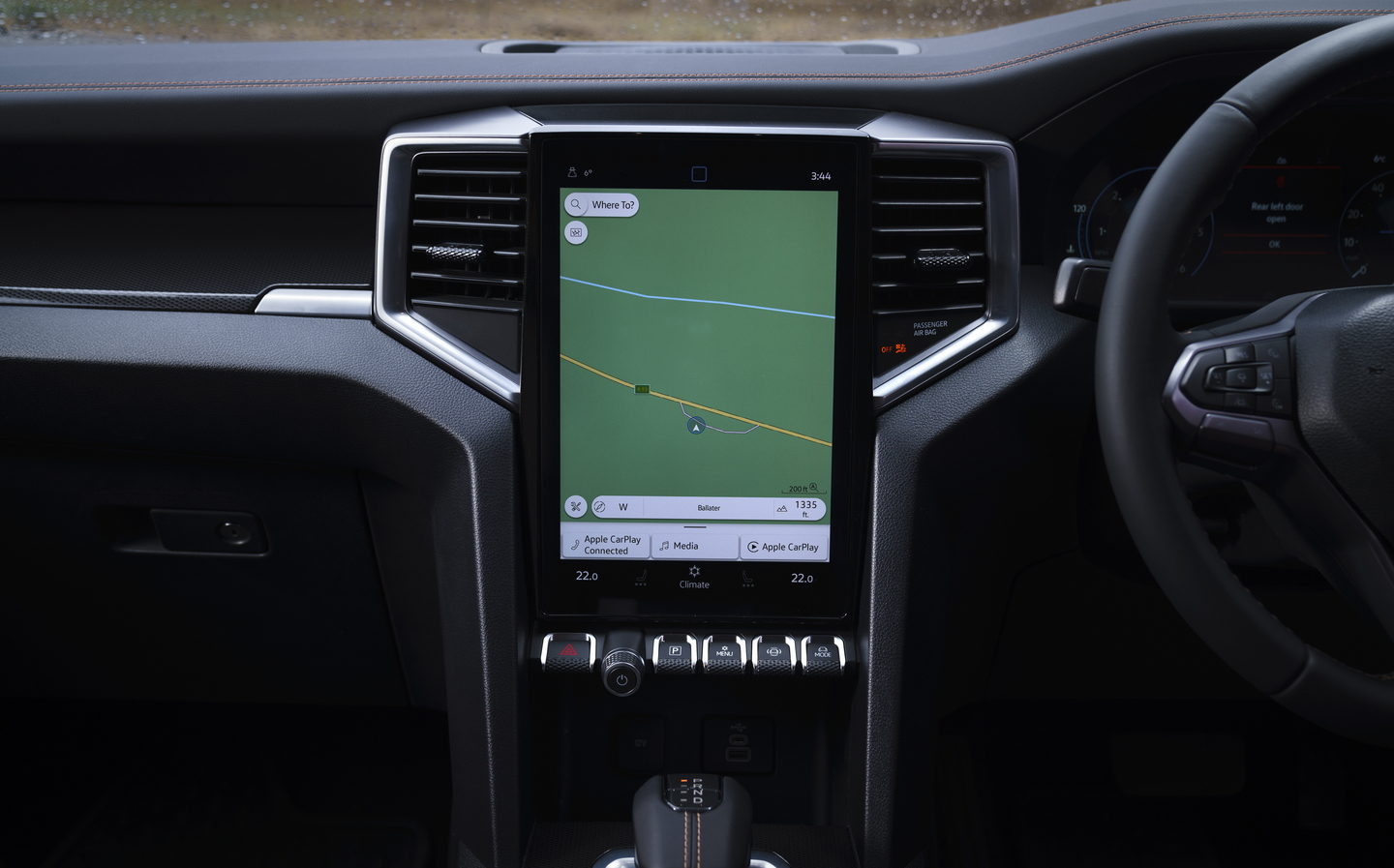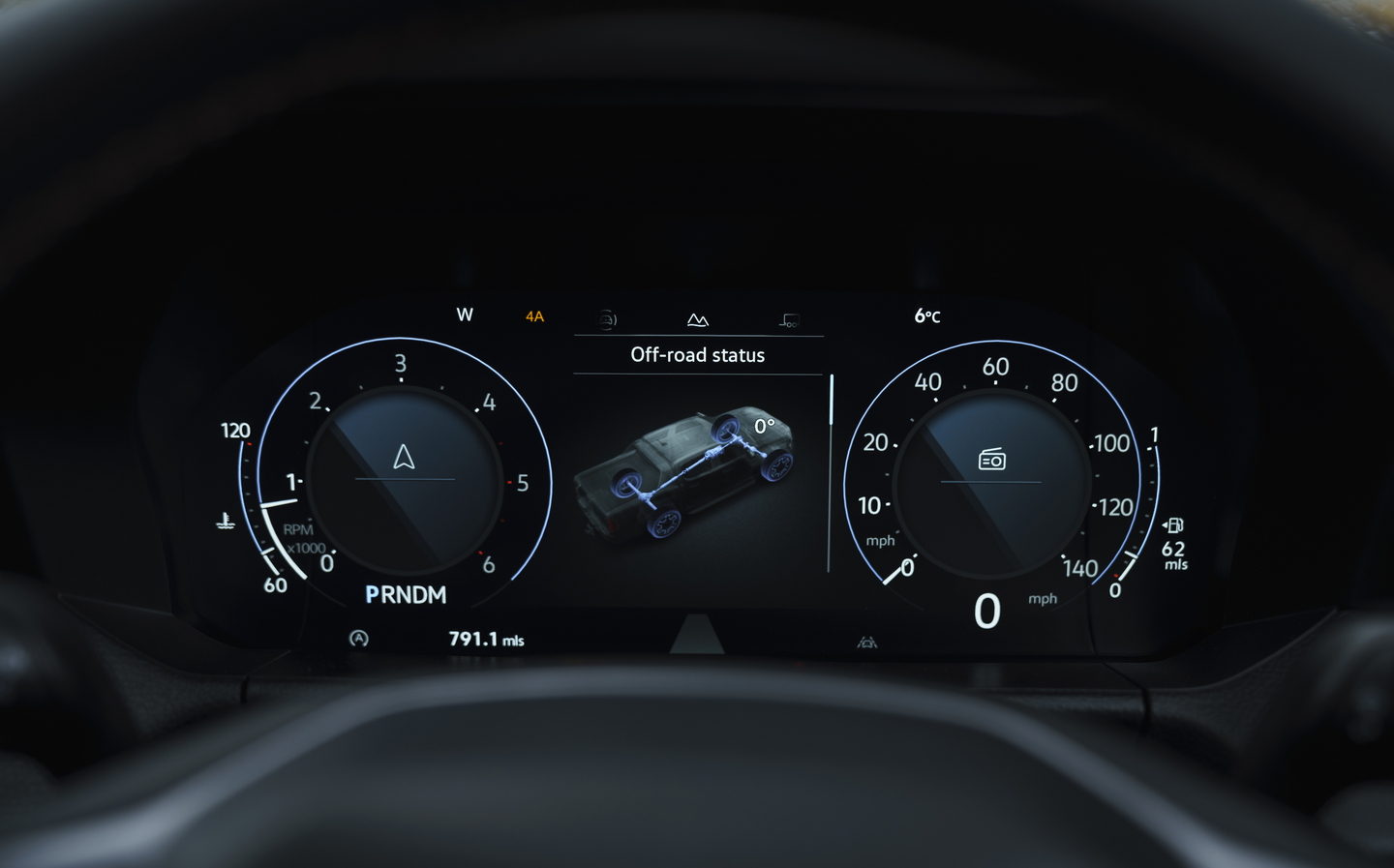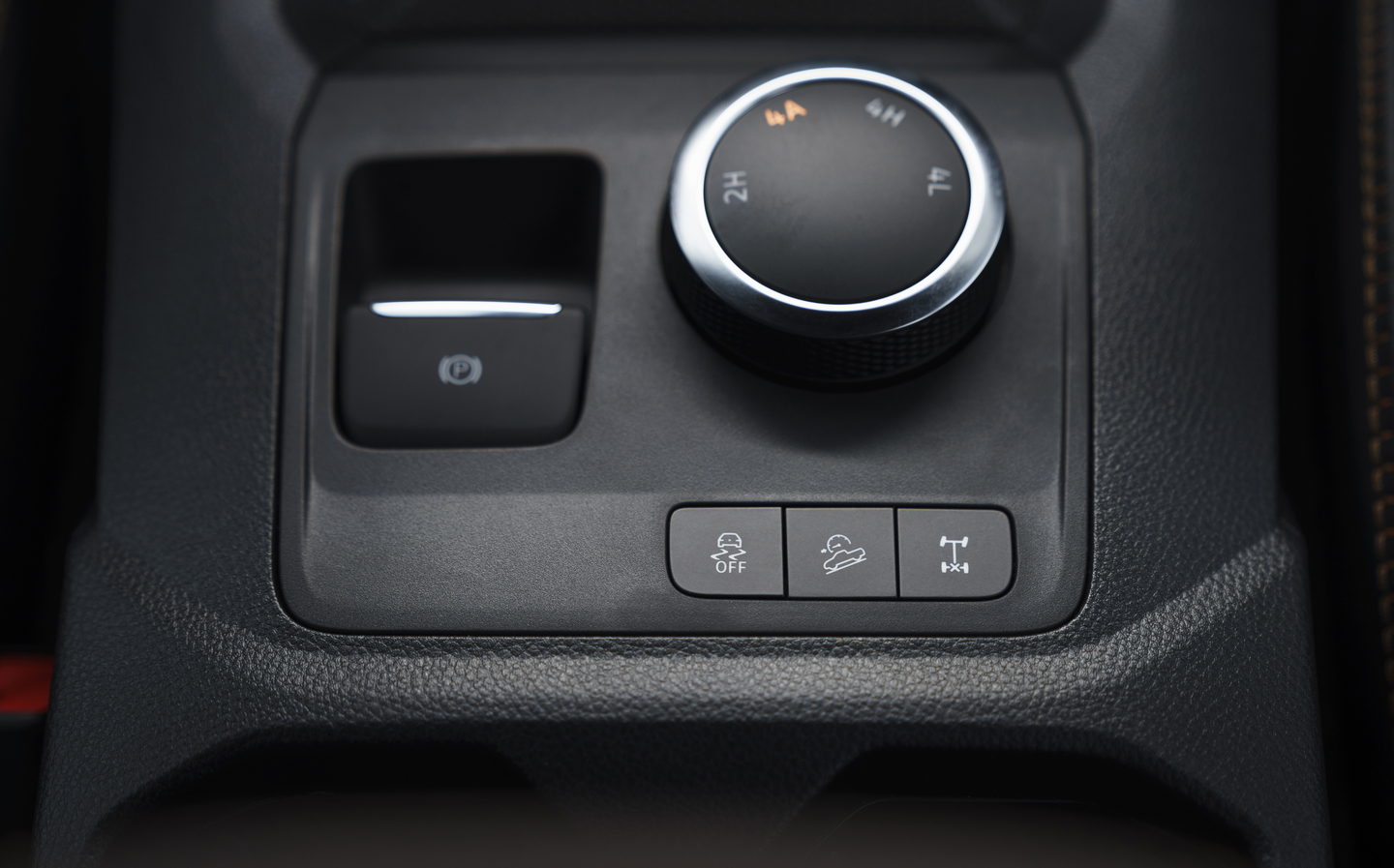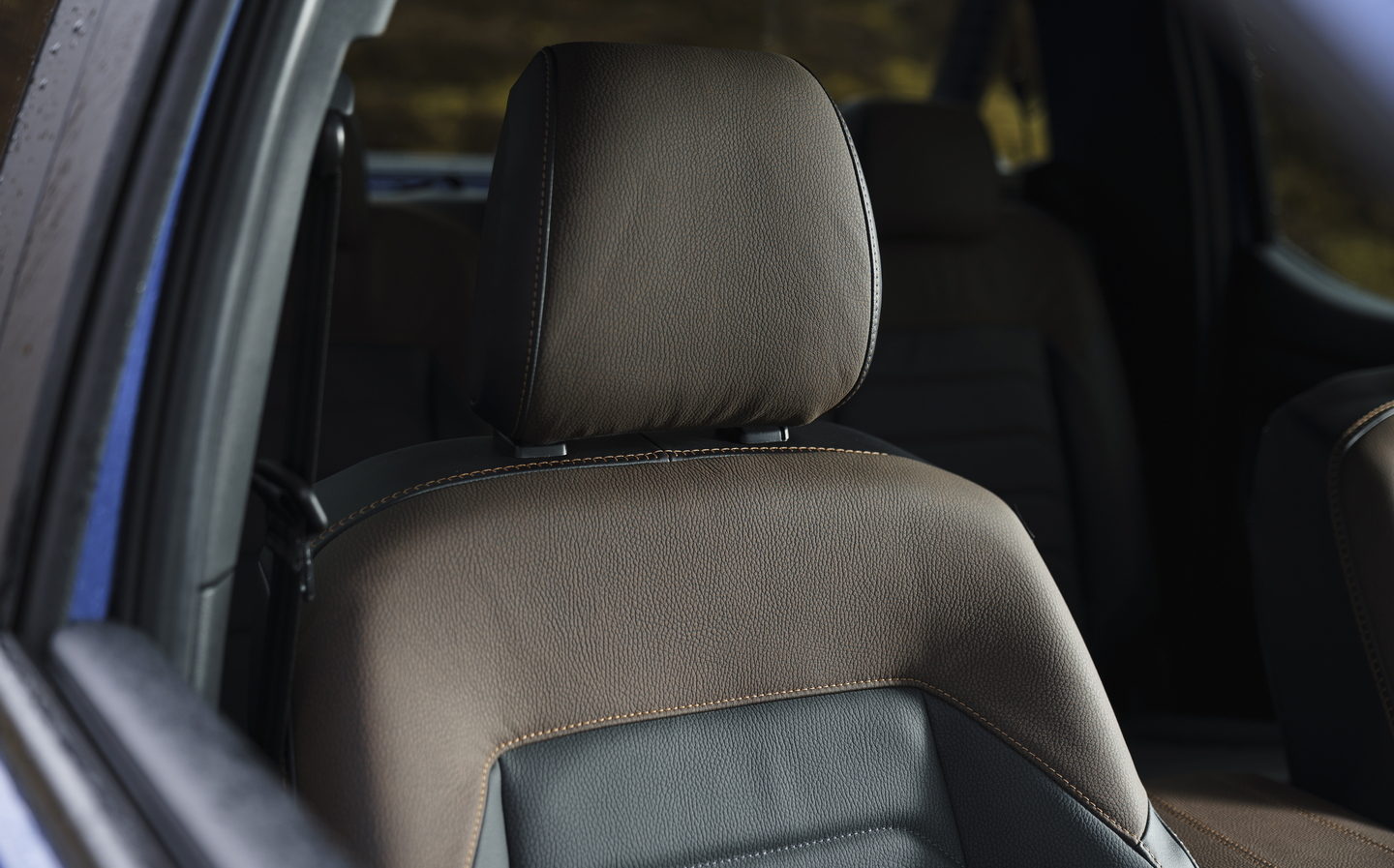Volkswagen Amarok 2023 review: Posh pick-up bridges the gap between work and play like never before
Could it be an alternative to a premium SUV?
After a couple of years on hiatus, the Volkswagen Amarok pick-up truck is back, and once again it’s designed to fill a niche somewhere between workhorse-style pick-ups and the luxury SUV sector. It’s returning to a class that has seen some contenders come and go — the likes of the Mercedes X-Class, Nissan Navara and Mitsubishi L200 are no longer available new — while the Ford Ranger dominates the pick-up truck sales charts.
Volkswagen seems to have taken the motto ‘if you can’t beat them, join them’ to heart, because under the familiar VW-style skin, the Amarok shares running gear with its Ranger arch-rival.
This includes the four-wheel-drive system and diesel engines — which means the Amarok is now available with four-cylinder or V6 diesel power from the off (the last model was V6 only for the second half of its life). It also means Ford’s 10-speed automatic gearbox is present, a transmission that first saw duty in the most all-American of Ford’s products, the Mustang.
So is Ford’s input into the development of the Amarok clear for everyone to see, or does VW’s new truck strike out as its own model?
Exterior design and rivals
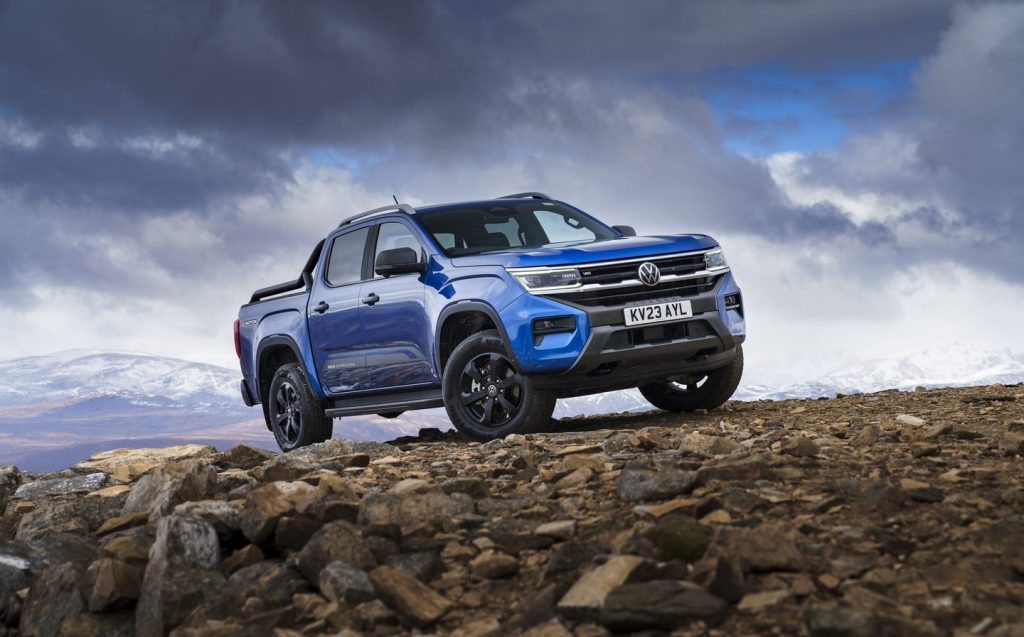
Yes, the underpinnings of the VW Amarok match those of the Ford Ranger — they have exactly the same wheelbase (the distance between the centre of the front and rear wheels), for example — but rather than just slap on a VW grille and be done with it, almost all of the body panels are different. Indeed, the only exterior parts that are shared are the roof and the roof rails fitted to higher-spec examples of both trucks.
Up front, the Amarok has a familiar VW look, with a high-set, horizontal split grille that has similarities with that of the Touareg SUV.
Higher-spec models also benefit from an ‘X’ design motif, which is formed by the lower section of the grille and the bumper beneath.
Along the sides, this second-generation Amarok features the same squared-off wheelarch design and black trim as the first-generation model, while narrow windows and different door skins help differentiate the Amarok from the Ranger.
Further back, the cargo bed is distinctly separate from the cab. Large C-shaped LED rear lights flank a big, flat tailgate with a prominent VW logo and Amarok stamped into it in capital letters.
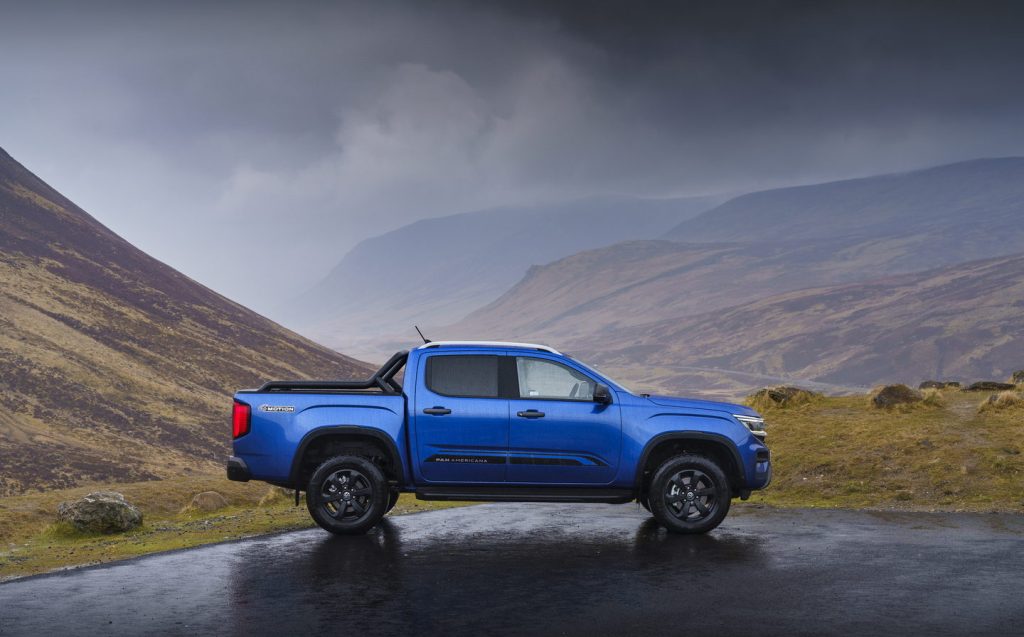
Choose an Amarok in Panamericana trim (as pictured) and you get black alloy wheels, a dark grey ‘X’ grille treatment and a matt black rollover bar in the load bed, plus running boards and a back bumper in the same finish. It’s designed to be a more lifestyle-focused model, and it largely succeeds with this look, including Panamericana logos on the doors and ‘4Motion’ graphics on the side of the pick-up bed.
It’s all designed to draw buyers away from not only the Ford Ranger, but rivals such as the Toyota Hilux, Isuzu D-Max and SsangYong Musso, although the VW’s higher pricing and more upmarket image means it’s also vying to be an alternative to premium 4x4s, so could be considered a rival to posh workhorses such as the Land Rover Defender, Mercedes GLE, Ineos Grenadier and even Volkswagen’s own Touareg.
Interior and practicality
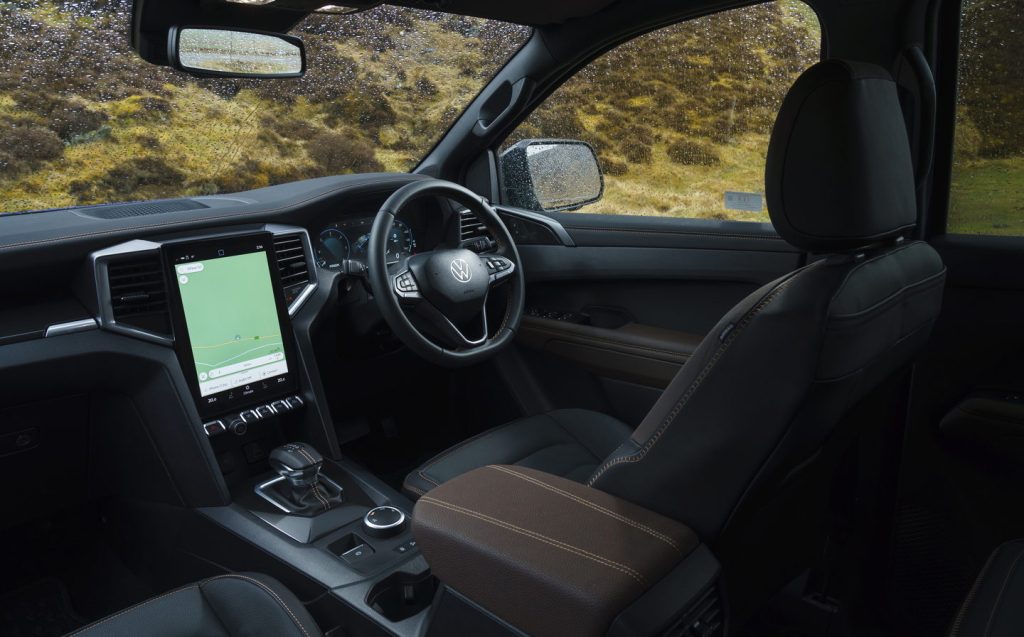
Climb aboard, which is what you have to do to step up into the Amarok’s cab, and if you’ve been in a new Ranger (or seen pictures) then the portrait touchscreen is the most obvious similarity between the two models.
There’s duplication elsewhere, with the ‘pinch-to-open’ internal door releases, and the same column stalks, automatic gearbox drive selector and light switches all giving the Amarok’s Ford roots away. However, if you never set foot in a Ranger, you wouldn’t be disappointed with the quality of the non-VW content, as it’s more than acceptable.
The portrait screen measures 12 inches in the Panamericana (base-spec models feature a 10in display), while a 12in digital driver’s display is also fitted. These both run software featuring VW fonts and graphics, which further distances the Amarok from Ranger, while the truck’s multifunction steering wheel is similar to the one you’d find in a Golf.
There’s no questioning the quality of the cabin, with switchgear that feels suitably solid. The bank of toggle switches beneath the screen are menu shortcuts for the hazard lights, parking functions, climate screen, safety-assist systems and home screen, plus a physical volume knob.
The in-depth controls all appear on the touchscreen, but since it’s so large, they’re a lot easier to operate than the fiddly screens found across the rest of the latest VW line-up.
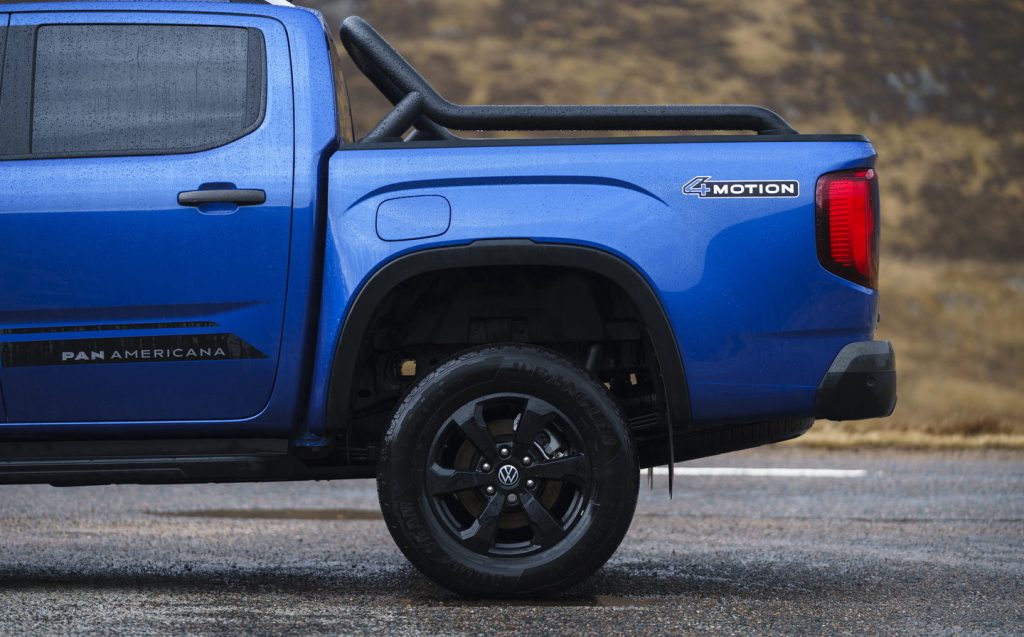
Of course, a pick-up truck is all about practicality, and the Amarok scores well here. It’s a full five-seater, and there’s plenty of space all round — the front seatbacks have been sculpted to make additional legroom for those in the back. Storage is good, with a wireless charging pad ahead of the gear lever, twin gloveboxes (although the upper one is only suitable for smaller items), an armrest bin, and deep door bins front and rear.
And there are two sets of Isofix child seat attachments on the back bench, which is required by regulations for any car with rear seats but it emphasises the Amarok’s work and play credentials.
Then there’s the cargo bed. It measures 1,624mm long and 1,584mm wide (1,224mm between the wheelarches). It’s quite high off the ground to lift items in and out via the tailgate, but you have no qualms about loading it with the dirtiest of items.
The payloads that it’s capable of carrying are vast, too. Nearly every version of the Amarok can carry over a tonne — they have to so that they qualify for the fixed-rate of company car tax for commercial vehicles. The exception is the top-spec Aventura, which just misses this important mark.
The wide and long bed features lashing eyes so you can tether large items in the back, while options include load covers and bed linings to make the bay more secure and washable.
Technology and safety
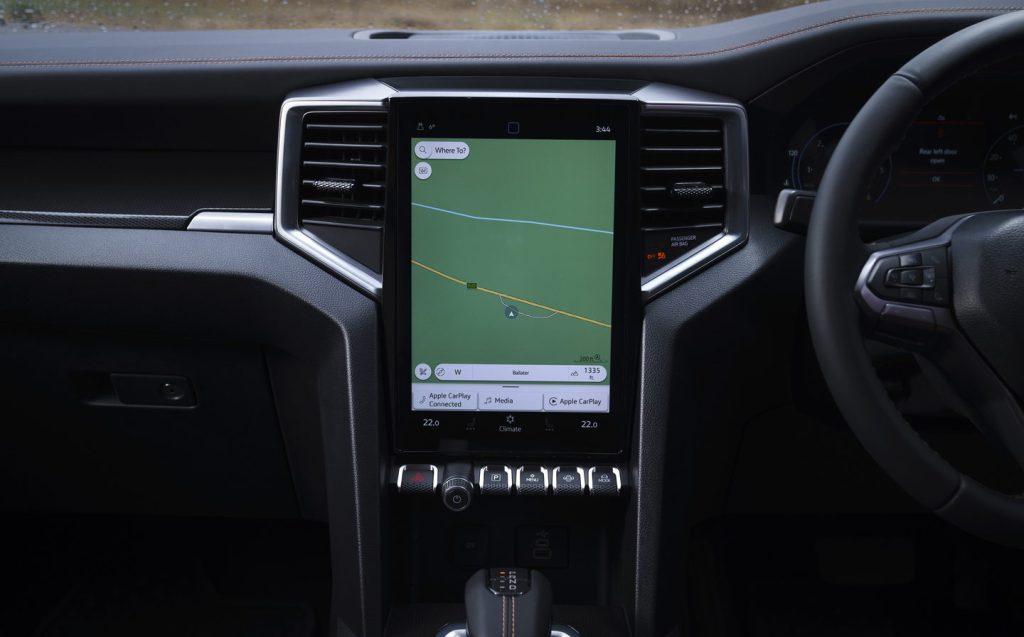
Progress in the pick-up truck sector means that models such as the VW Amarok can match premium SUVs for the kind of technology you’ll find on board. Chief among these additions includes the large 12in digital instrument cluster, operated via the steering wheel buttons.
It can be set up to show navigation instructions and maps, audio information, lots of detail from the trip computer, phone connectivity or even off-road data.
The huge touchscreen in the Panamericana measures 12 inches across, and its portrait layout means it can be split into two zones of information. This is something that we’ve seen on Fords fitted with the same display, such as the Mustang Mach-E, and means that a lot of functions are easier to access here than they are in other VW models fitted with the company’s own infotainment system.
Sharp graphics and a responsive touchscreen are highlights, while wireless Apple CarPlay and Android Auto mean you aren’t left with cables all around the car. If you do need to charge a device, there’s a wireless charging pad just under the touchscreen, or you can use the USB-A and USB-C sockets provided in the same place. There are additional USB sockets for back-seat passengers, too.
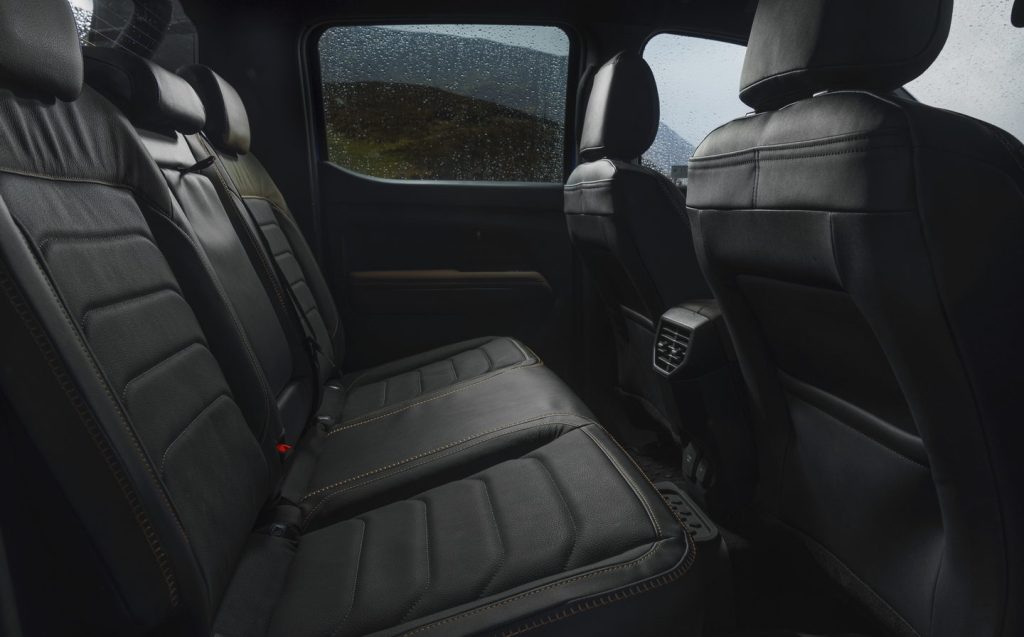
Safety tech onboard the Amarok is at a level that matches the best modern SUVs. One criticism we have of the truck is that the long bonnet is set quite high, which creates a blind spot just in front of you.
However, activate the parking system, by either engaging reverse or pressing the toggle switch below the touchscreen, and there’s a nose-mounted camera that provides a live feed of what’s happening directly in front; it even has its own washer jet to keep it clean.
Combine this with standard-fit autonomous emergency braking with pedestrian and cyclist detection, and you’ll be pretty unlucky to collide with anything ahead.
Other safety tech on the Panamericana model includes adaptive cruise control, lane-keep assist, LED matrix headlights, side assist for lane changes, a 360-degree camera system, road sign recognition, park assist with rear traffic alert, tyre pressure monitors and keyless entry and starting.
Performance, power output and acceleration
Diesel is still the powertrain of choice in the pick-up truck class, and the latest Amarok is offered with a choice of 2.0 TDI and 3.0 V6 TDI powerplants. These are rebadged Ford units, and the 2.0 TDI produces up to 168bhp when equipped with a six-speed manual gearbox, or 202bhp when the 10-speed automatic is added.
The Panamericana comes exclusively with the more powerful V6 twin-turbodiesel, which makes 237bhp. It uses the same 10-speed auto as the 2.0 TDI.
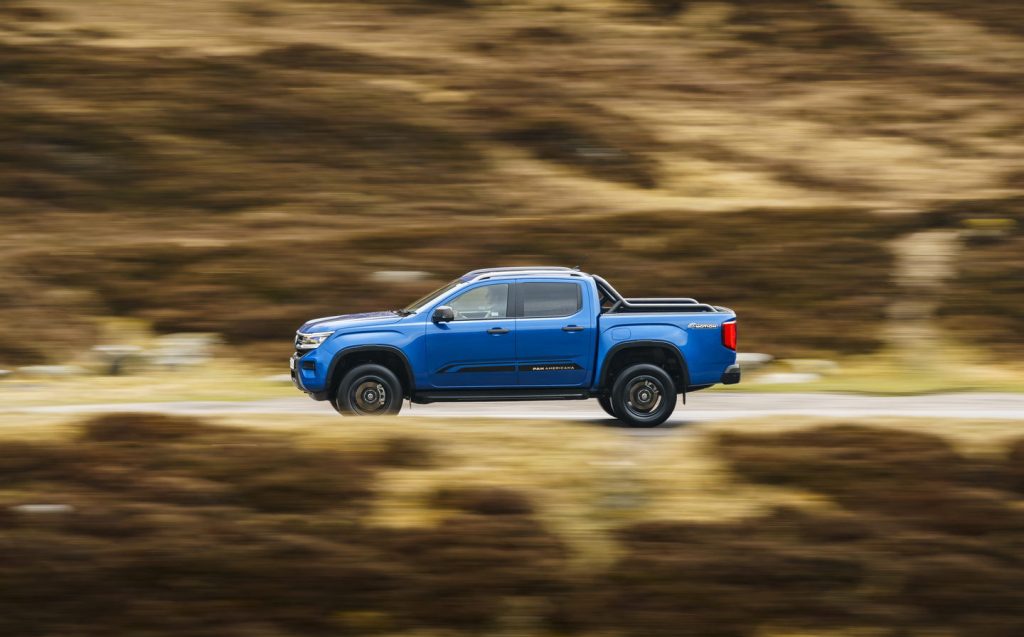
The auto gearbox is pretty good, with smooth shifts up and down that help the engine stay in its power band, while the 442lb ft of torque on offer means the Amarok has plenty of grunt for heavy payloads and towing; it can haul a maximum of 3.5 tonnes.
The gearbox is connected to 4Motion four-wheel drive. Different modes are selected via a rotary controller on the centre console, where 2WD, Automatic 4WD, 4WD High, and 4WD Low settings are offered. Simply select the setting you want and follow the easy instructions on the driver’s display to engage the mode you need.
Panamericana models boost their off-road ability with a rear differential lock, which prevents an unloaded wheel from spinning uselessly while the wheel on the opposite side receives no torque. All versions feature hill descent control and under-body protection.
Off road, the Amarok is pretty unstoppable, even with road-biased tyres, and is likely to be able to venture further off-road than any owner will want to travel — only the truck’s size is likely to cause issues.
A short overhang up front offers a 30-degree approach angle, and there’s a 23-degree departure angle at the back, while ground clearance measures 234mm and there’s a wading depth of 800mm on offer.
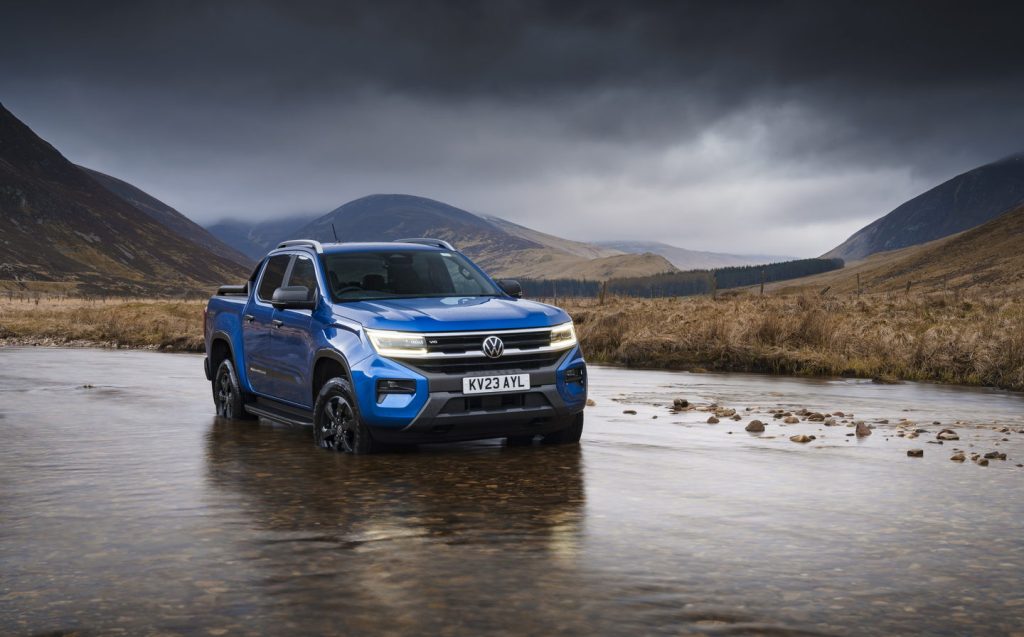
The V6 diesel is smooth at idle and through the rev range, and offers effortless acceleration with a pleasing V6 hum. A nine-second 0-62mph time isn’t bad for a vehicle that weighs nearly 2.4 tonnes, and the 10-speed auto doesn’t shunt between gears when pressing on, either.
The downside to this V6 set-up is modest fuel economy. While the 2.0 TDI can offer a WLTP-tested best of 33.6mpg in six-speed auto guise, the V6 auto models do no better than 28mpg in official test conditions. Unless you do lots of motorway driving you’re likely to see worse than that in everyday use.
Ride and handling
Pick-up trucks aren’t really designed to offer sharp handling, while the suspension, especially at the rear, has to deliver a compromise between comfort and the ability to cope with a heavy payload in the load bed.
Inevitably there will be some bounce from the ride, and that’s the case in the Amarok.
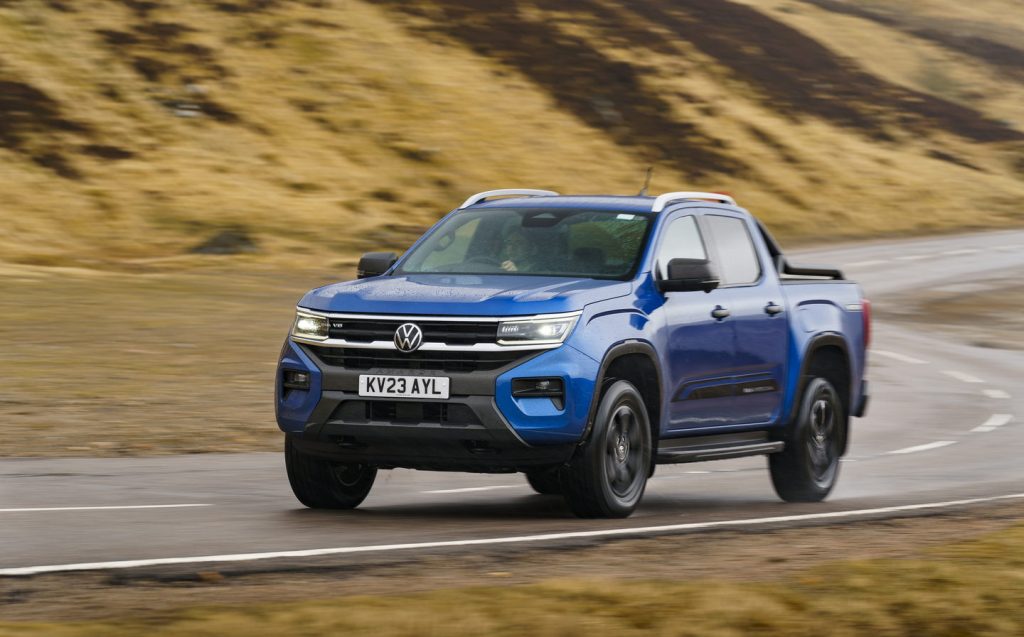
However, it’s far better than the previous incarnation, and offers the kind of comfort that SUV buyers could easily live with. The bodyshell will shudder and shake when hitting big potholes, but overall the ride is decent. It’s even better when there’s some weight in the back of the truck.
In terms of handling, there’s enough grip, while the four-wheel-drive system will shuffle power to the tyres with the most traction if you’re pressing on, although this isn’t something that the Amarok really encourages you to do. You’ll be put off by the amount of body roll generated in corners at speed, while the steering is really designed with off-road driving in mind and so doesn’t have the feedback or response to give you the confidence to push it any harder than necessary.
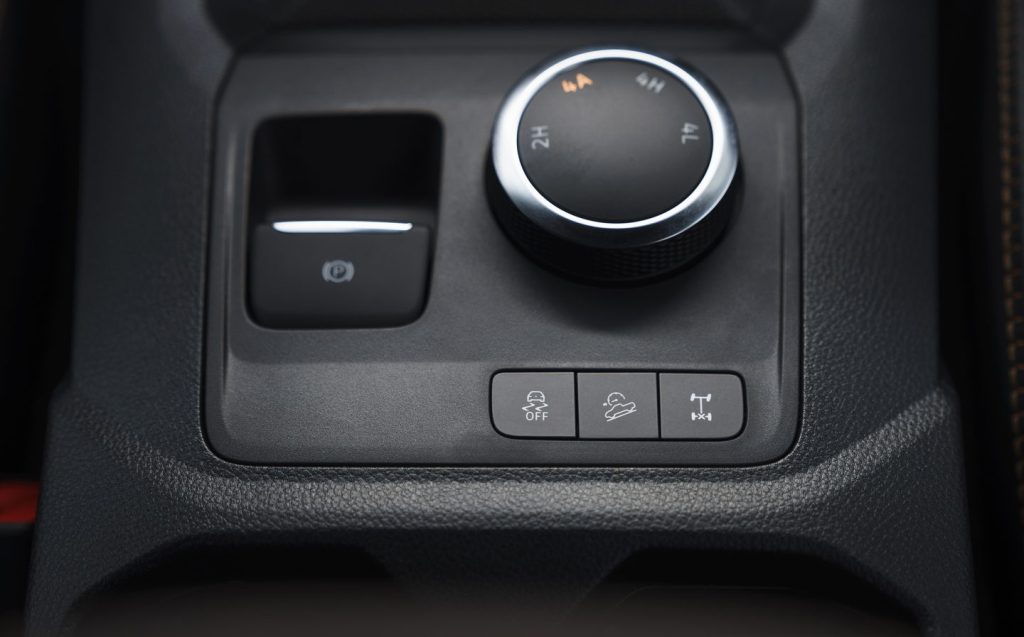
Take things easy, and the Amarok is fine most of the time. Its size will be the biggest issue around town, while on motorways it’s a fine long-distance cruiser. And with so much power on tap, if you’re towing a trailer the additional weight will barely register.
Pricing and on-sale date
The Amarok range kicks off in Life trim with the 2.0 TDI manual costing £40,791, although most buyers are expected to be business users, in which case the price is £34,055 excluding VAT. This is the only manual model offered, while the more powerful auto version costs £42,351 (£35,355 excluding VAT). The Style model is expected to be the most popular version because it offers the best balance of price and equipment.
The 2.0 TDI auto Style is £50,931, while upgrading to the V6 diesel bumps the price up to £53,931.

The lifestyle-focused Amarok Panamericana is V6 only and costs £56.631, while the top-of the range Aventura costs £57,591.
It’s worth pointing out again that this top-spec model doesn’t have the required one-tonne payload needed for pick-up trucks to qualify for commercial vehicle business rates, and a high emissions rating of 265g/km means it’ll be more expensive than a similar SUV to run as a company car.
Standard kit on all models includes alloy wheels, a multifunction steering wheel, LED headlights, DAB radio, autonomous emergency braking, front and rear parking sensors, reversing camera, adaptive cruise control and air conditioning.
Style models add two-zone climate control, microfibre seat trim, the 12in digital cockpit and 12in touchscreen, 360-degree cameras and an electrically adjustable driver’s seat.
The Panamericana has different exterior styling, plus leather seats, comfort suspension, rear differential lock and a Harman Kardon stereo, while the Aventura adds plusher leather, 21in wheels, more chrome and silver trim, plus a heated steering wheel.
Verdict: Volkswagen Amarok review
The pick-up truck class has moved on from when the original Amarok was released, but the latest model easily keeps pace with the changes. It offers a more upmarket experience than ever, and is a genuine alternative to a family SUV.
It’ll head further off-road than most SUVs, while that vast cargo bed offers fantastic versatility, especially if you kit it out with a secure tonneau cover.
If you travel long distances on a regular basis, the Amarok will offer refinement and cruising ability aplenty, whether you’re carrying a large load or not.

However, there is a fly in the ointment, and it’s a big one in the shape of the Ford Ranger. Since both trucks are based on the same running gear, the differences only really boil down to price and specification. In this instance, the Ford has a wider range of options in terms of spec, from the more basic models right up to the Raptor performance truck.
Concentrate on the mainstream double cab versions with a one-tonne payload and, like for like, the Ranger line-up offers better value for money. That big VW badge on the nose will still do its bit to draw customers to the Amarok, though, and they won’t feel like they’re getting a Ranger in a different dress, either.
Related articles
- If you were interested in the new Volkswagen Amarok, you might want to see our review of the Ford Ranger Raptor
- Did you see the ID. 2all concept car from Volkswagen?
- Check out our review of the Volkswagen ID.5 GTX
Latest articles
- Omoda 5 prototype review: Bargain family SUV is solid first effort for new Chinese brand
- Dacia Duster 2024 review: Rugged, affordable SUV modernised with electrification and quite the glow up
- Audi A3 Sportback 2024 review: Softly, softly, catchy premium hatchback buyer
- New electric-only Mini Aceman fills gap between Mini Cooper hatch and Countryman SUV
- Tesla driver arrested on homicide charges after killing motorcyclist while using Autopilot
- Porsche Macan 2024 review: Sporty compact SUV goes electric, but is it still the class leader for handling?
- F1 2024 calendar and race reports: What time the next grand prix starts and what happened in the previous rounds
- Aston Martin DBX SUV gets the interior — and touchscreen — it always deserved
- Nissan unveils bold look for updated Qashqai, still made in UK


